While driving south on our snowbird adventure last winter, we decided to head to the coast of South Carolina, since we had never been there before, and it turned out to be a fabulous area to visit in December. We spent 16 days along the coast, staying in four state parks and two county parks. Here are a few fun facts about South Carolina:
- The state has a rich history, including Spanish explorers arriving in 1514 and the founding of Charleston as the state’s first English settlement in 1670.
- South Carolina became the country’s eighth state in 1788 and currently has just over four million people.
- Two major hurricanes have impacted South Carolina – Hazel in 1954, and Hugo in 1989.
- We spent most of our time along the coast, which is also called Lowcountry, due to being at sea level.
- South Carolina is famous for its golf courses (but since we are not golfers, we didn’t take advantage ?).
This map shows the route we took along the coast, so you can get oriented for what this article covers.

Our first stop was Myrtle Beach State Park. This park is right by the beach, and staying here cost only $19 per night (plus tax) for a site with electric and water hookups in a well-treed area – from our site, you got high speed internet as well! The only downside is close proximity to the airport, but plane landing times were grouped quite well, so this was not really an issue. We stayed at this park for three nights and walked around 15,000 steps every day. We explored the beach in our hunt for seashells, had some great meals, and hiked all the nature trails. We also walked along the board walk in Myrtle Beach to learn about the history of the area.
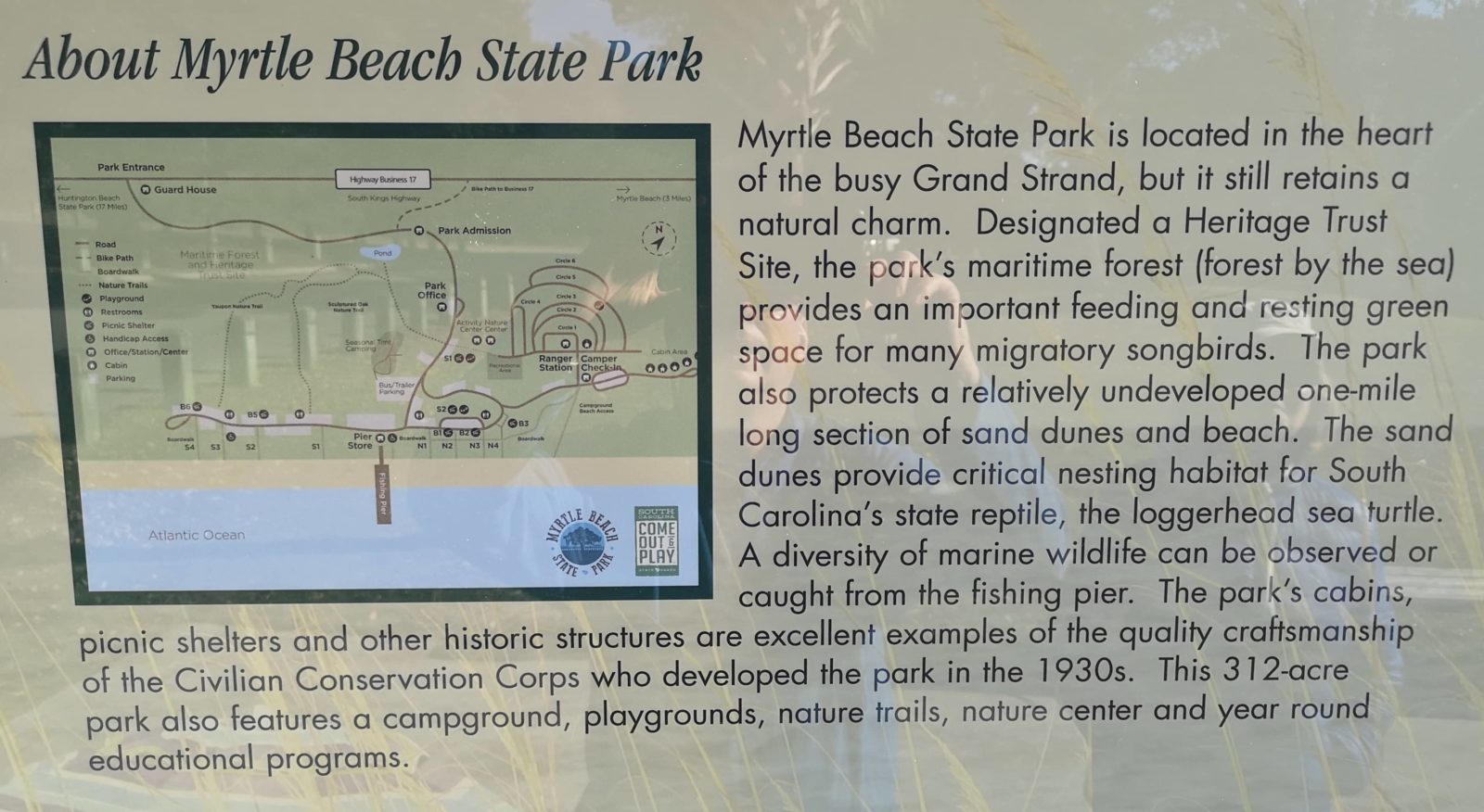
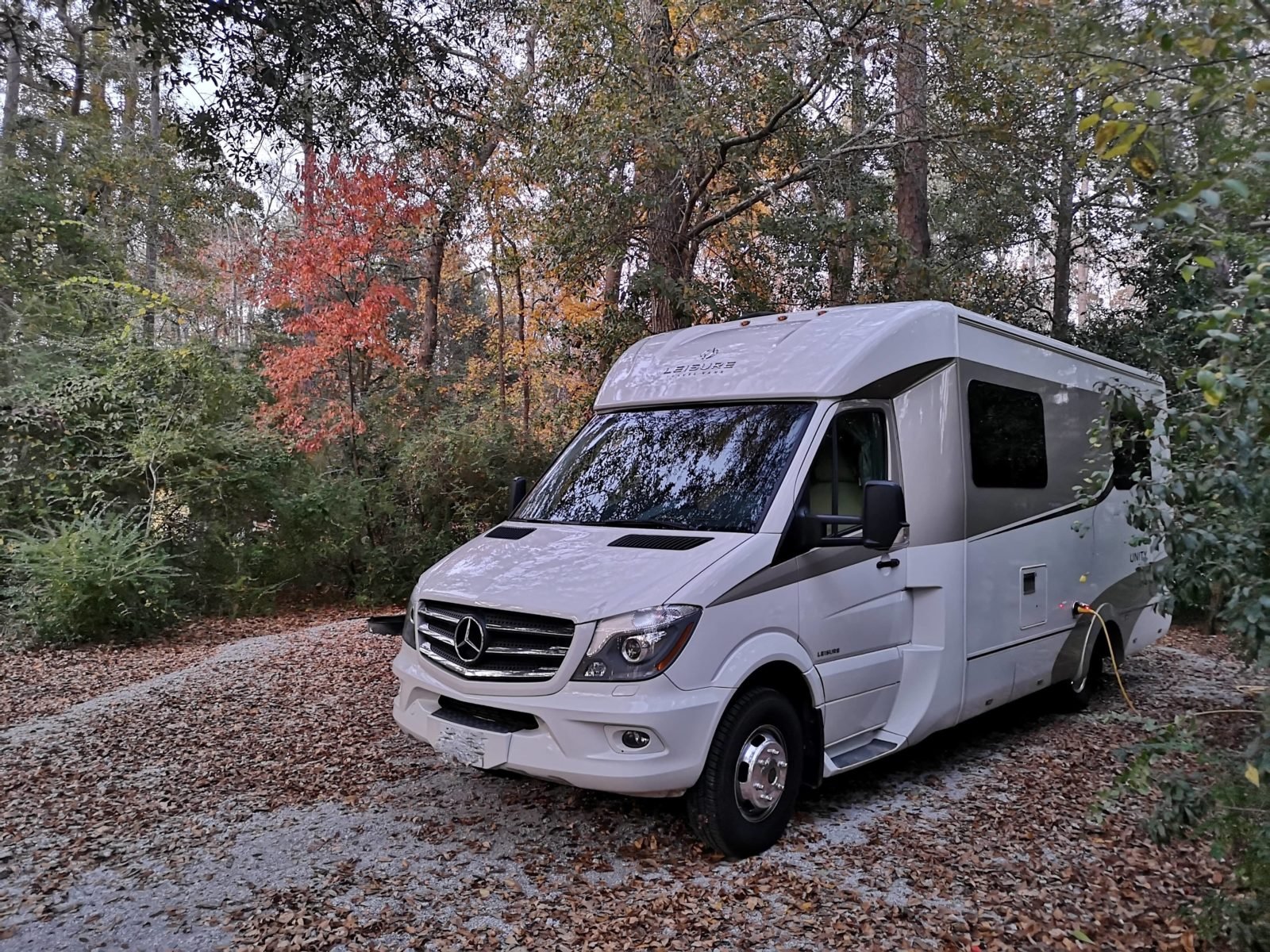
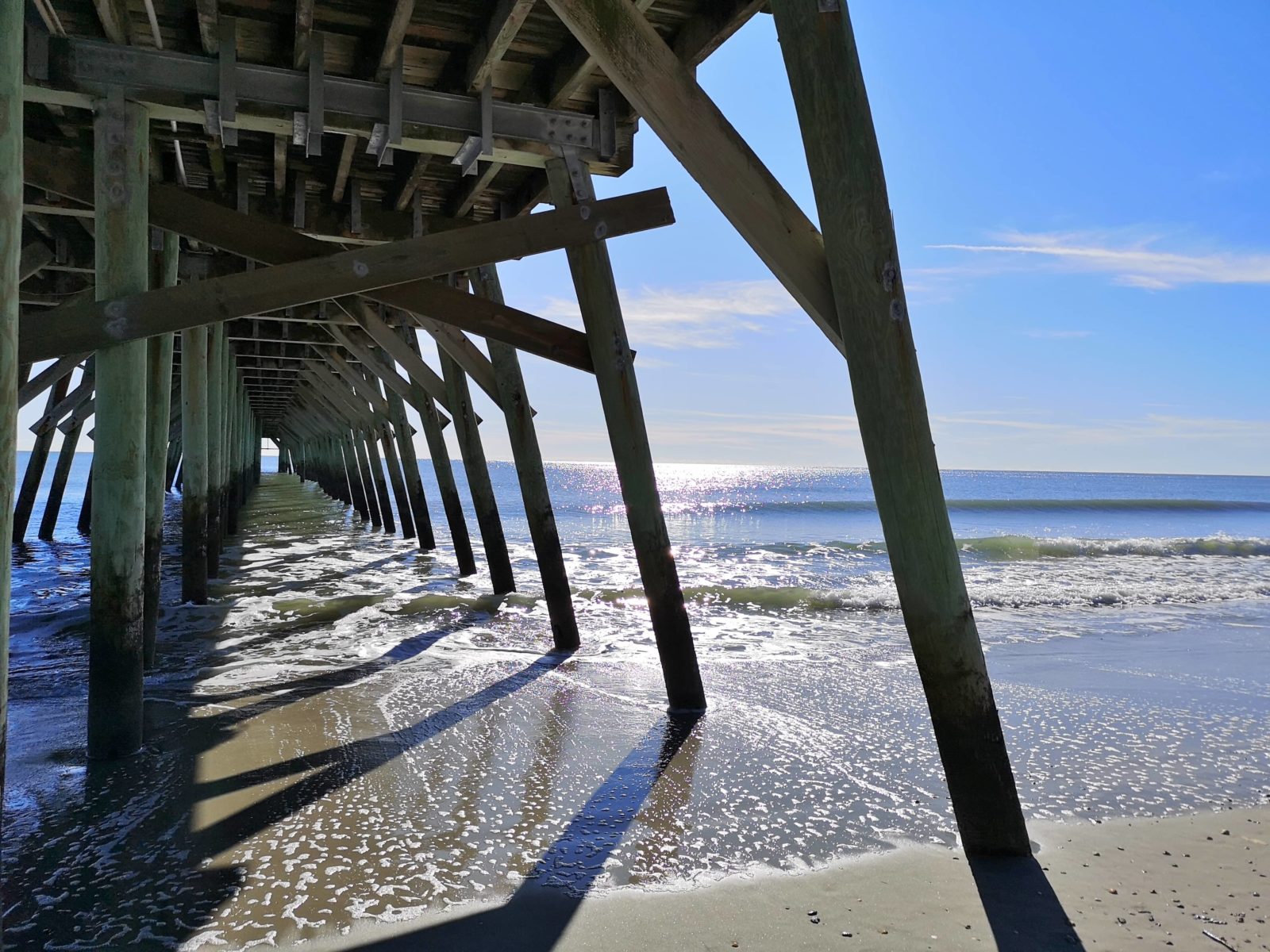
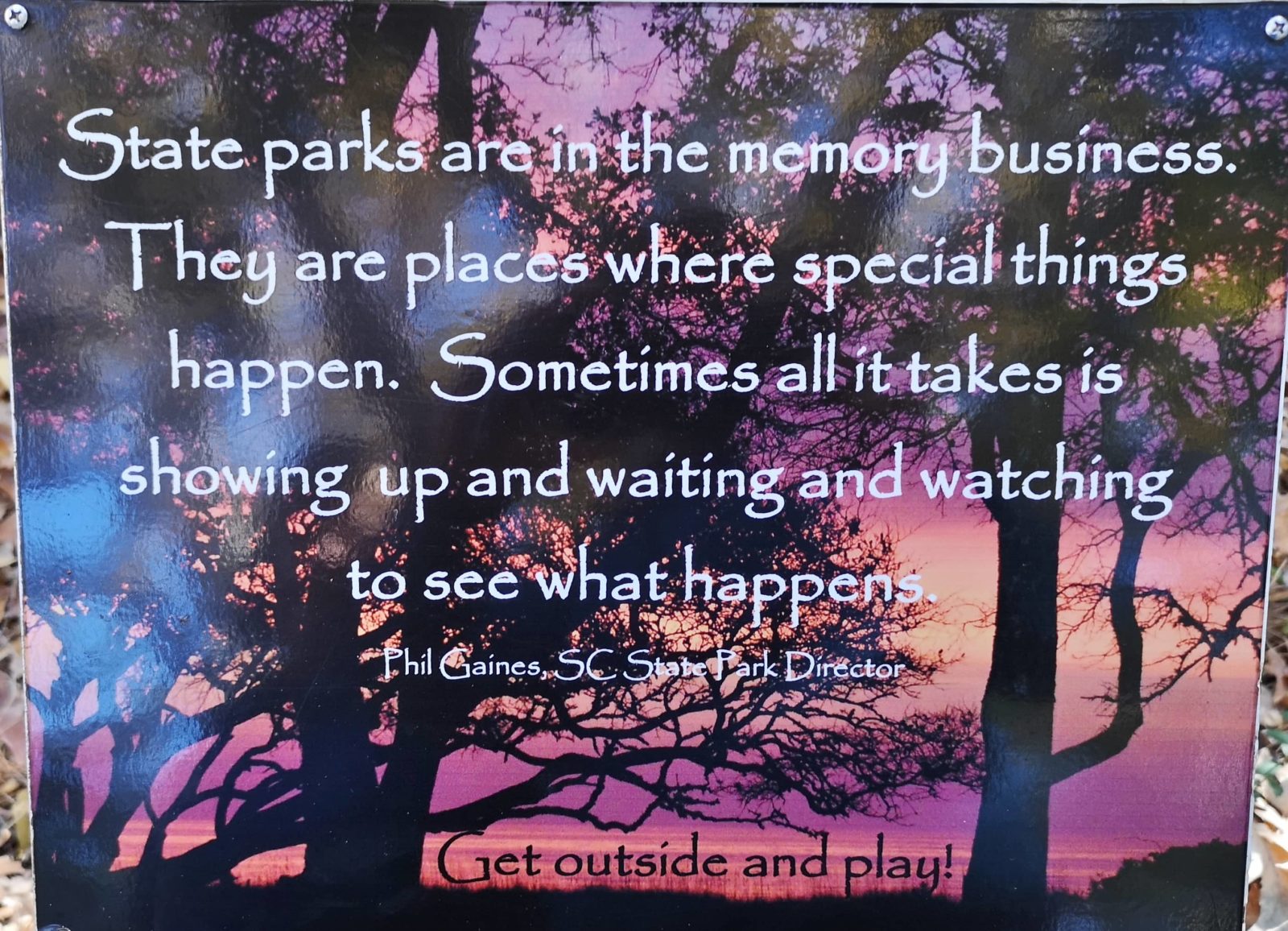

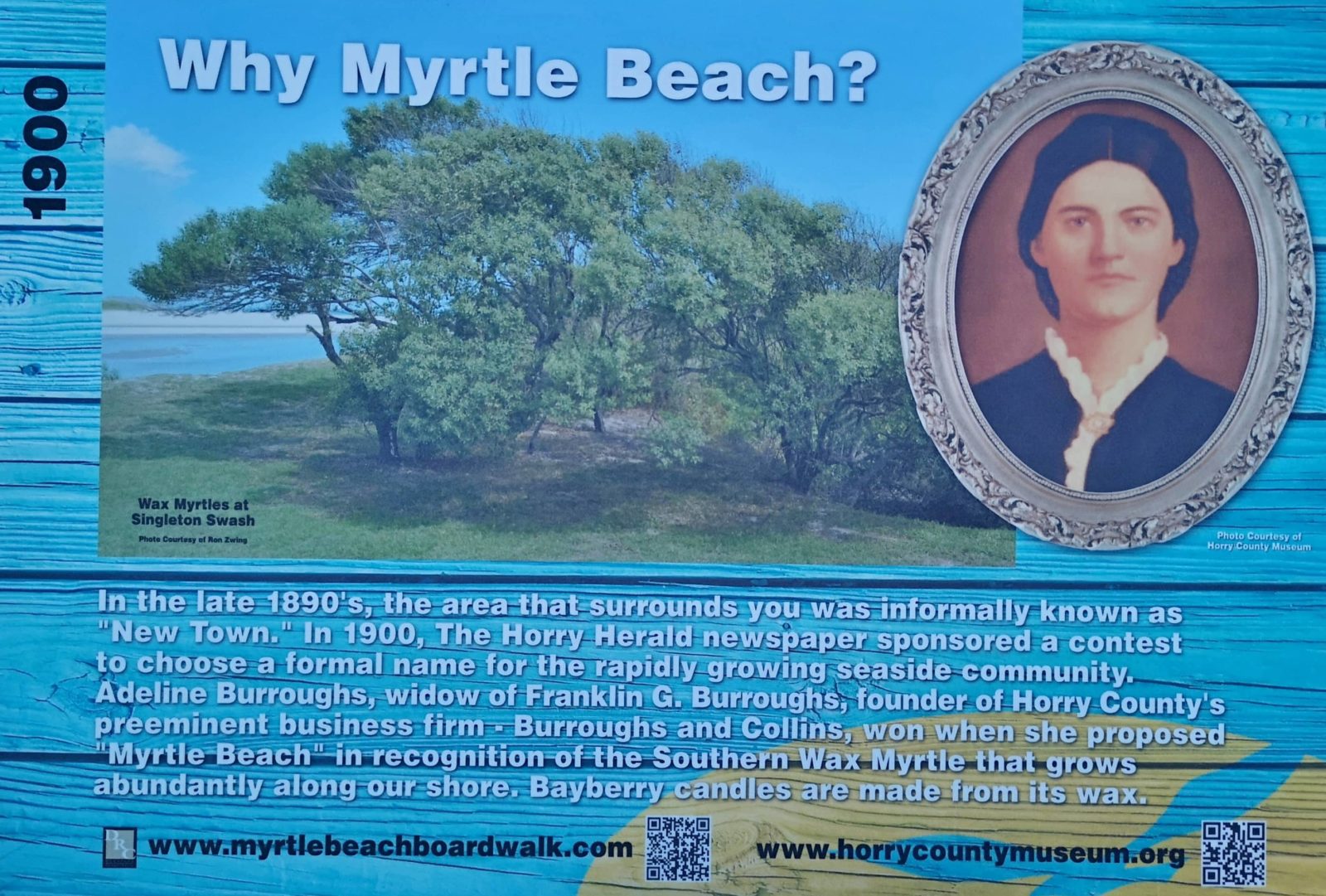
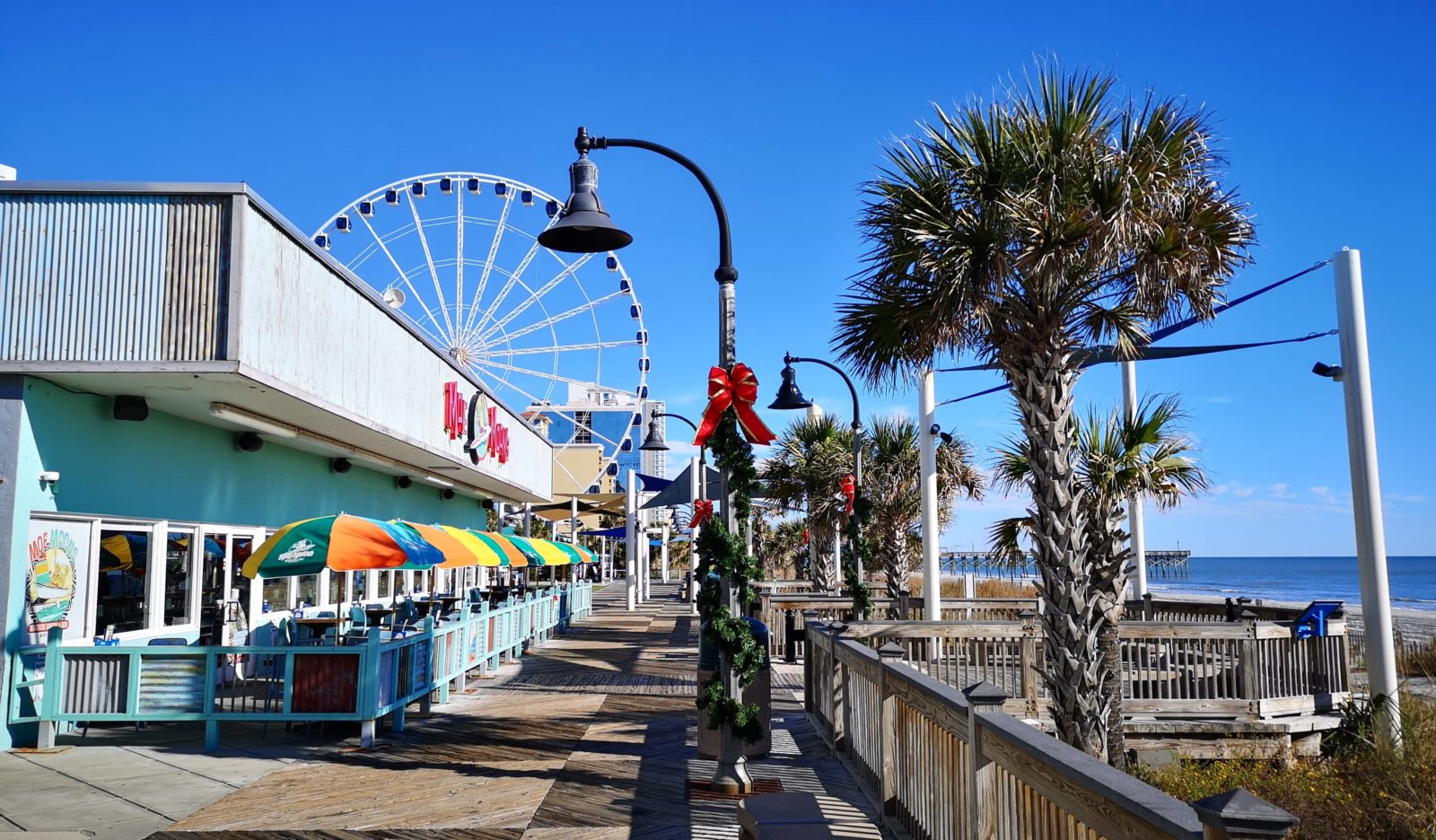
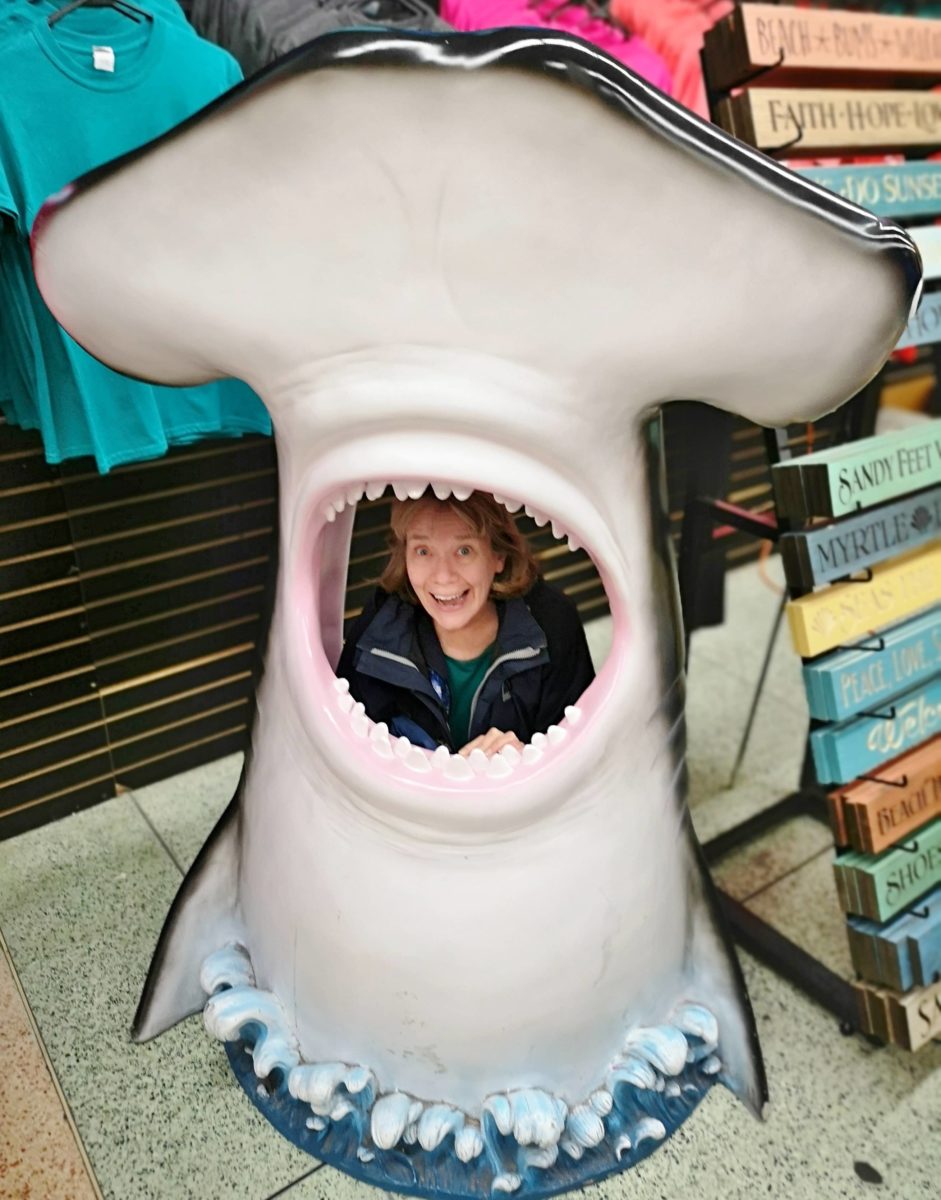
Our next stop was just down the road at Huntington Beach State Park, where we stayed for four nights. This park seemed to be more popular, as it was more difficult to get a booking. On our first day here, we enjoyed walking along the beach, seeing horseshoe crabs and sand pipers, and looking for seashells. The second day, we did a much longer walk on the hiking trails to see the birds and the alligators. We did a quick tour of the Atalaya Visitor Center to learn about Archer and Anna Huntington. The Huntingtons were a wealthy, artistic couple (Archer was a poet and Anna was a sculptor) who purchased four rice plantations in order to build Atalaya, their winter getaway (atalayaa means “watchtower” in Spanish), and eventually also Brookgreen Gardens, where many of Anna’s sculptures are on display. The amazing thing about all of this is that they built their getaway during the Depression. We decided to do the full tour of Atalaya the following day, when they were having a Christmas craft sale. One reason we enjoy the coastal area is our love for walking on the beach, and this day as we headed back to our LTV we were lucky to see dolphins swimming just offshore.
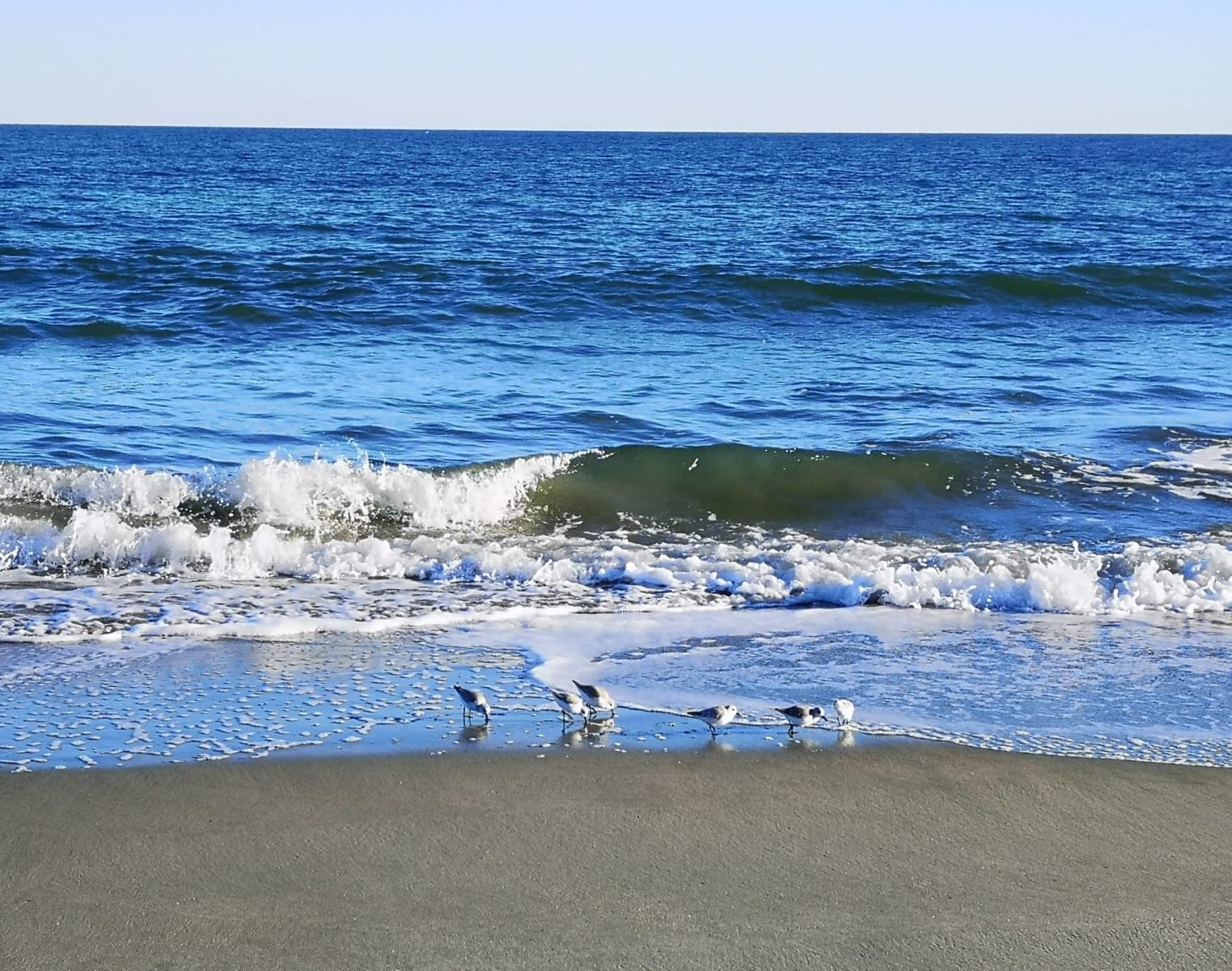
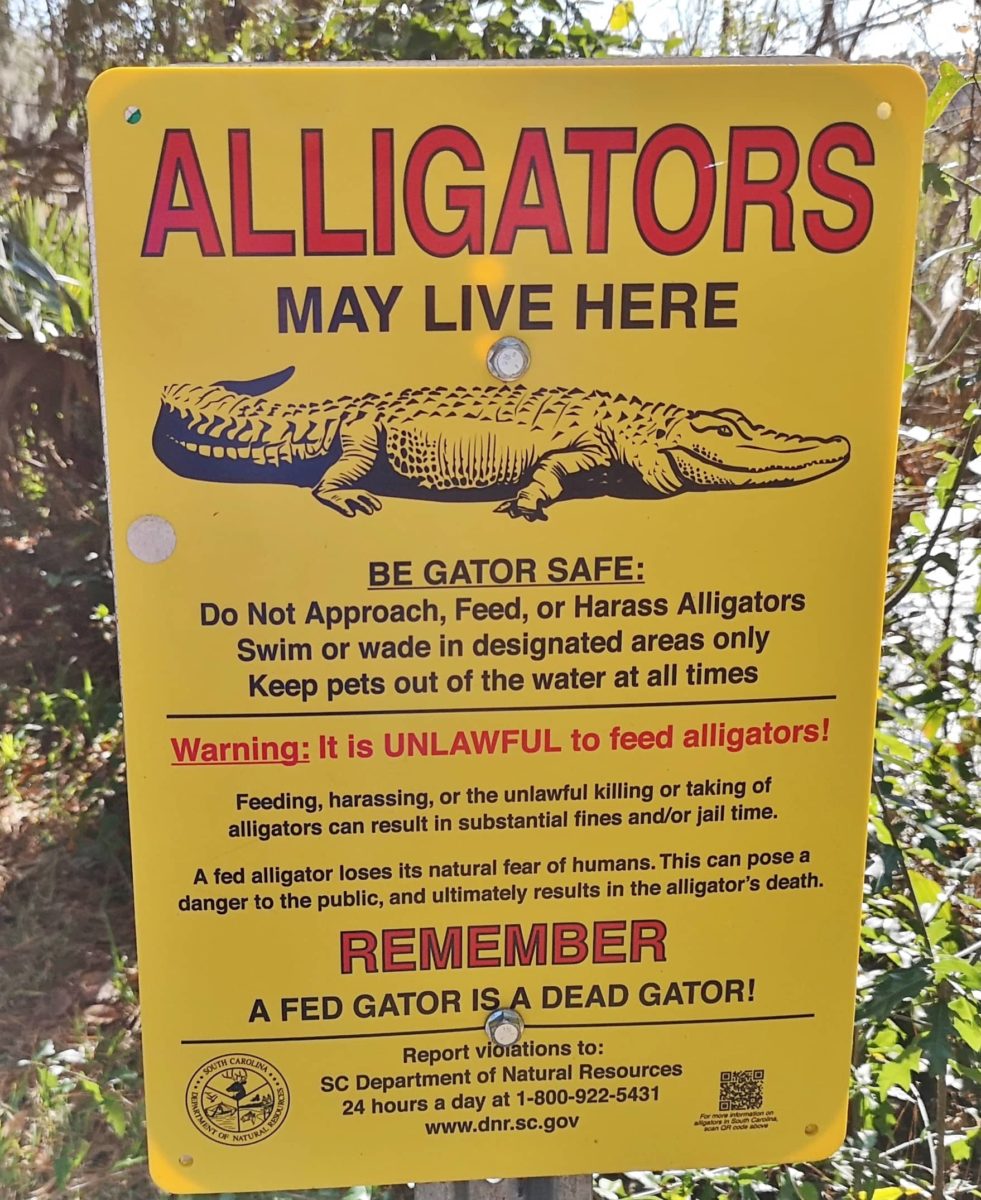
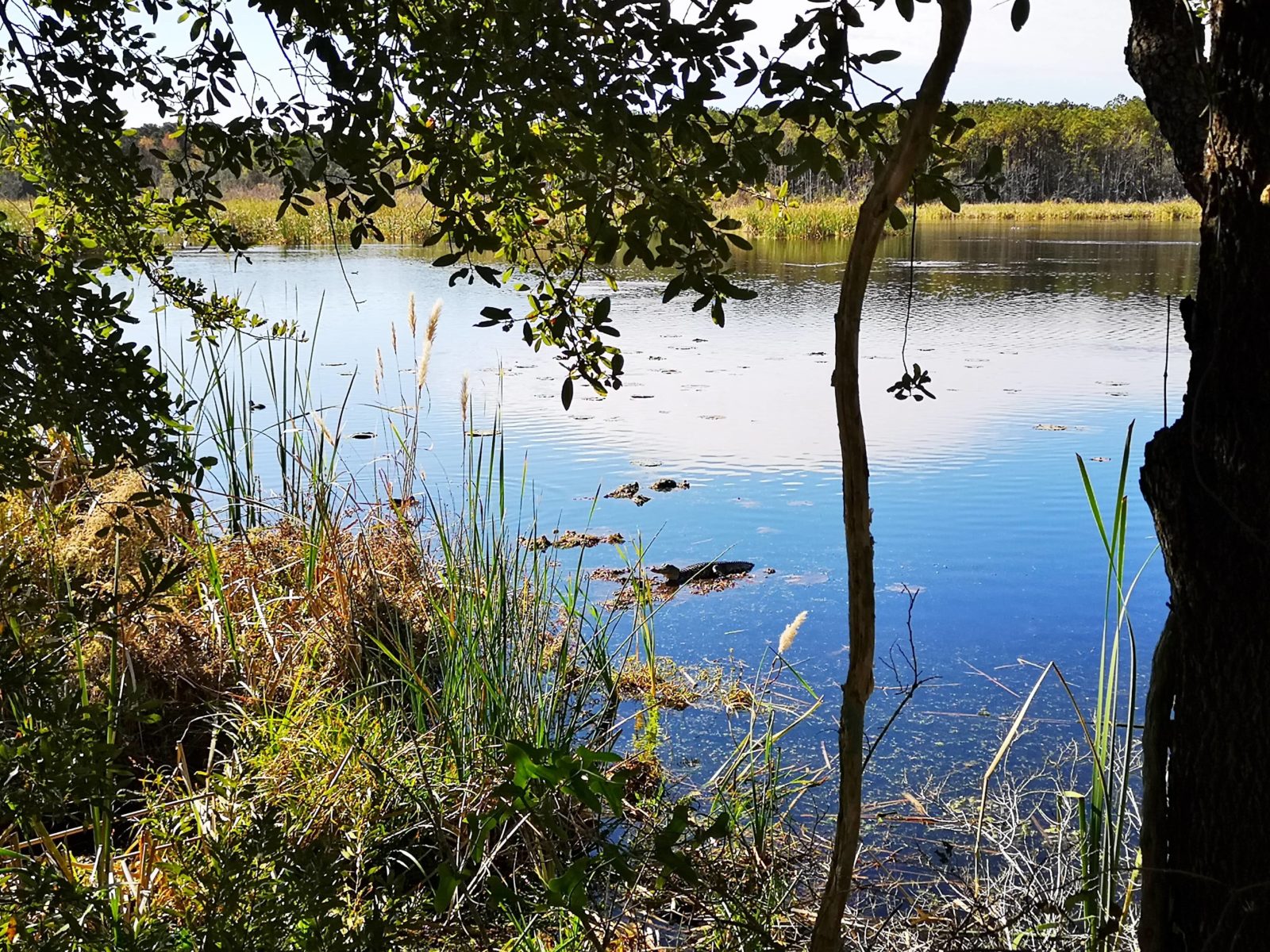
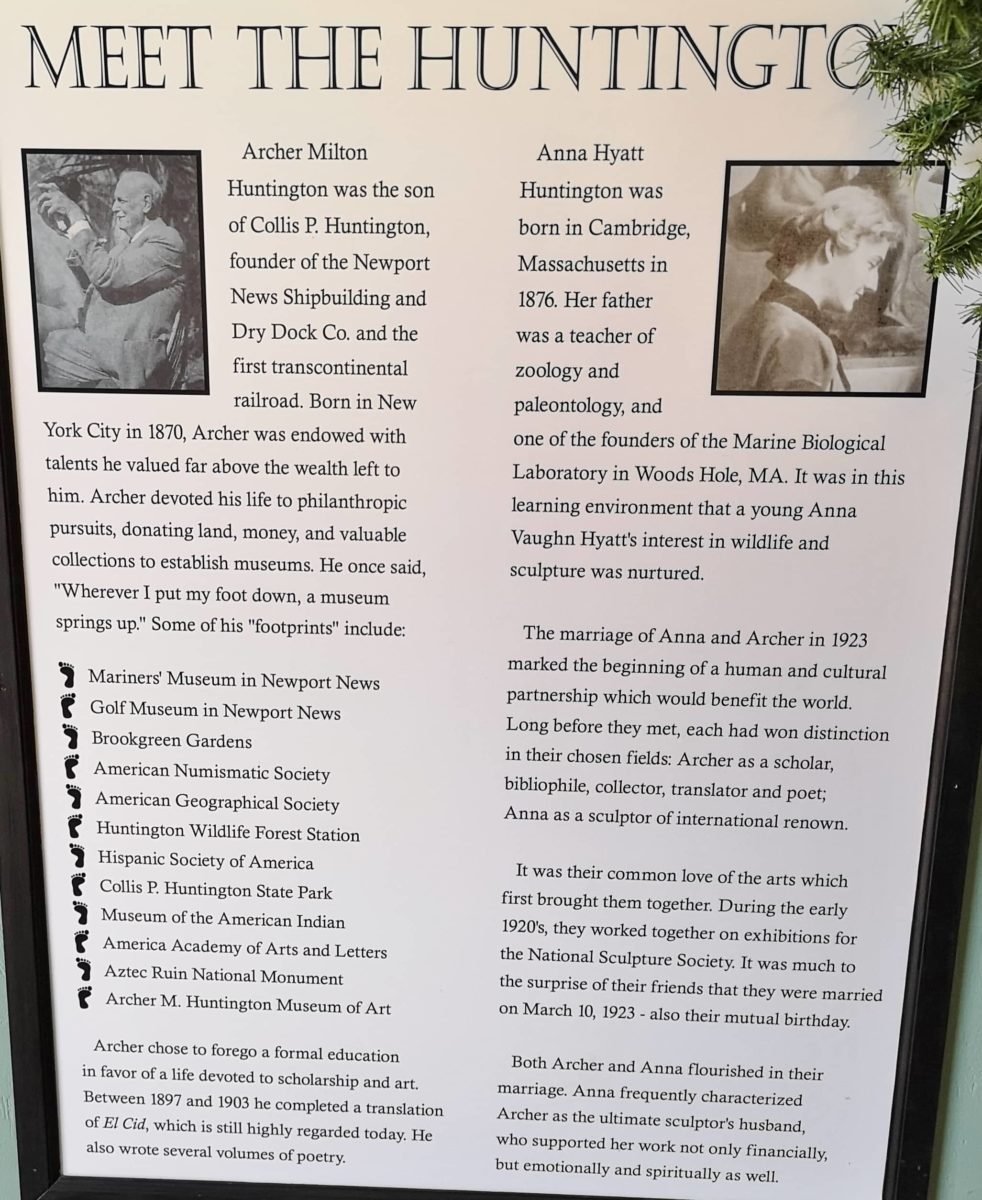
We prefer the “go with the flow” travel style, but we are finding it more difficult to get campsites in the state parks recently, so we spent the next morning booking parks for the following several weeks. In the afternoon, we headed over to Atalaya, where the Friends of the Park were holding a craft sale as a fundraiser to build a new nature center in the state park. The estate was decorated for the holidays, and most rooms were decorated by the vendor using them. It was interesting to read about the history of each room (Joel) and then check out the local artisans’ work (Sharon). The estate has two large courtyards, and we got to enjoy the sunny weather while listening to The Pawley Island Jazz Band.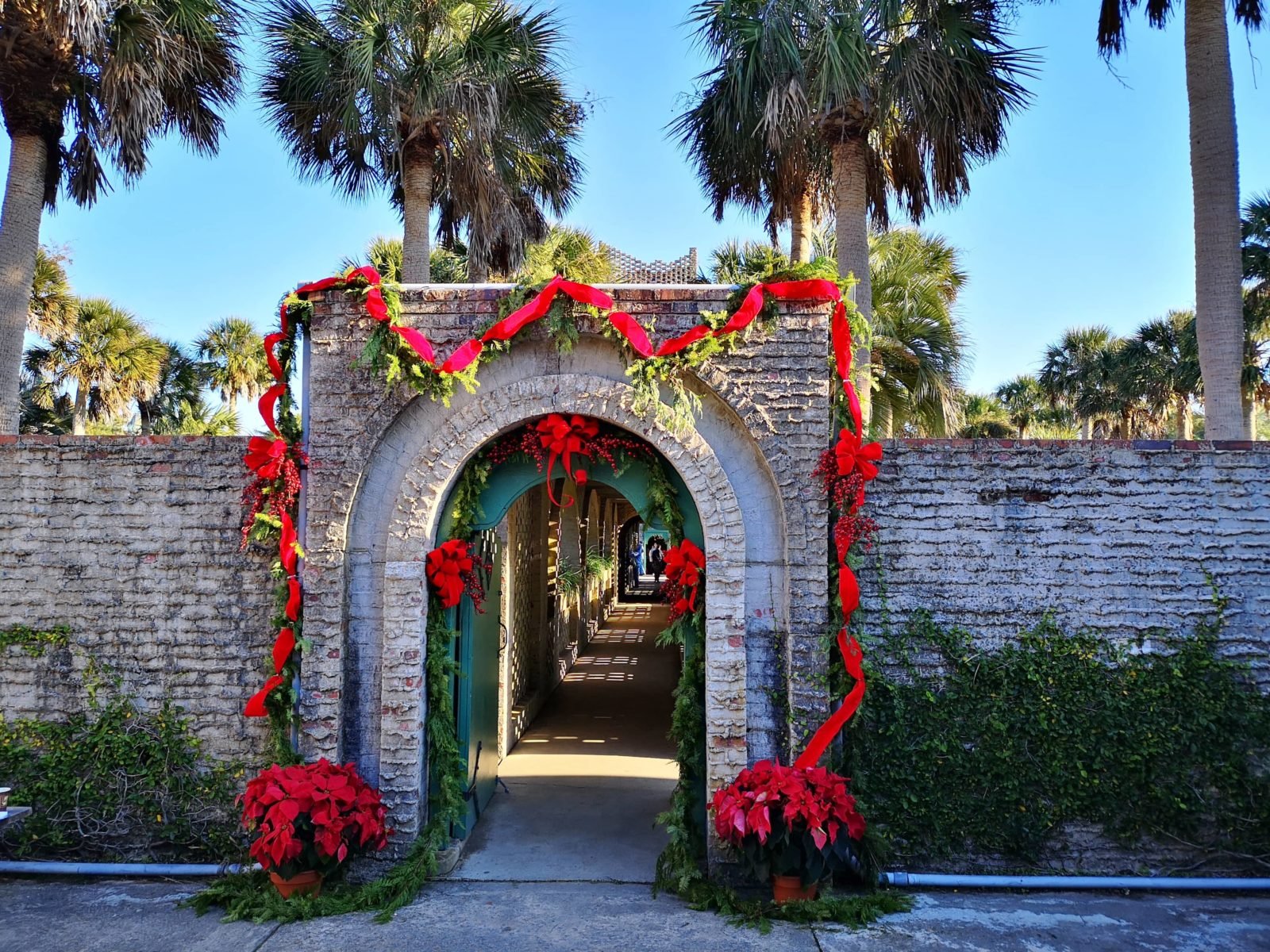
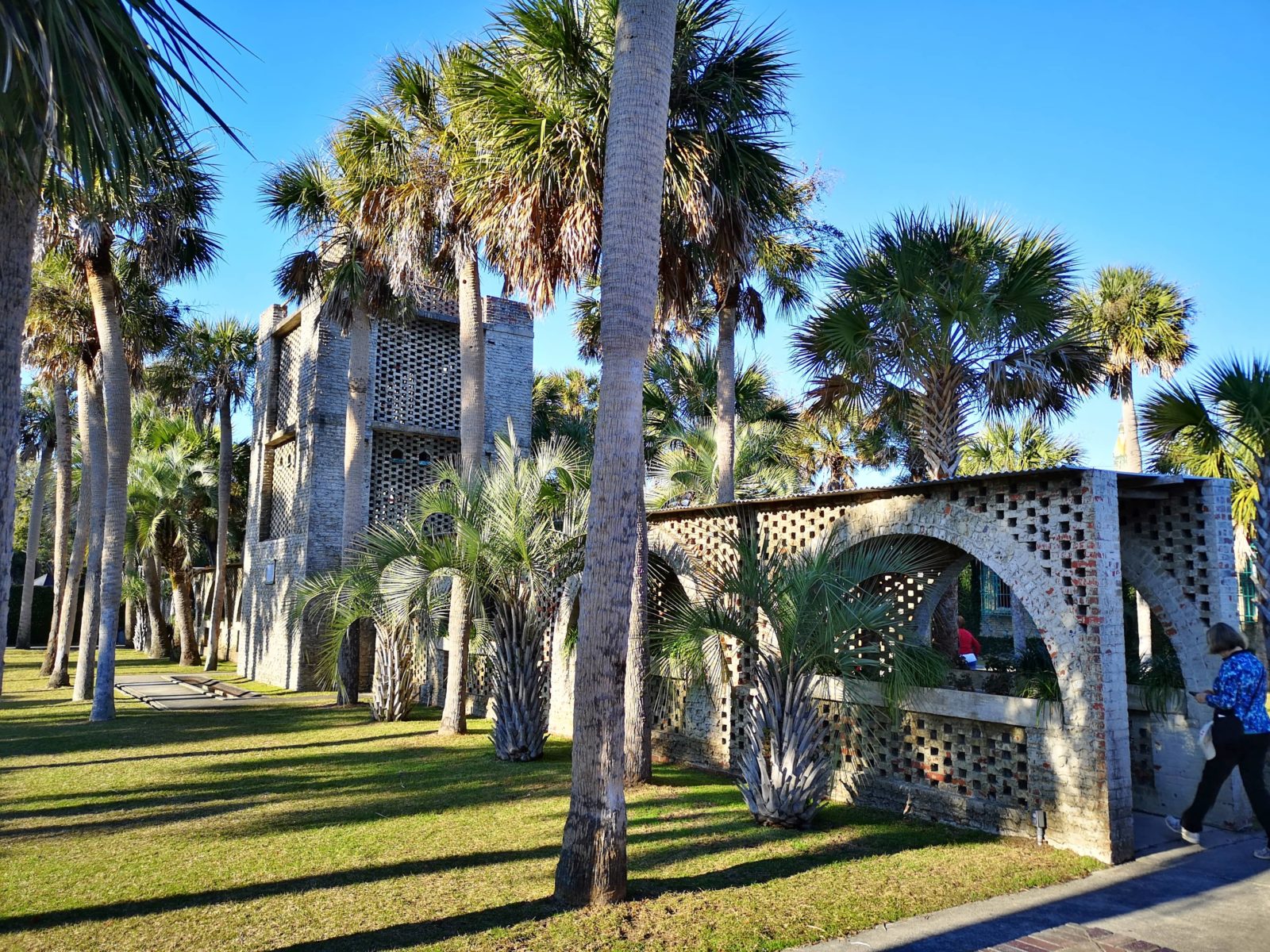
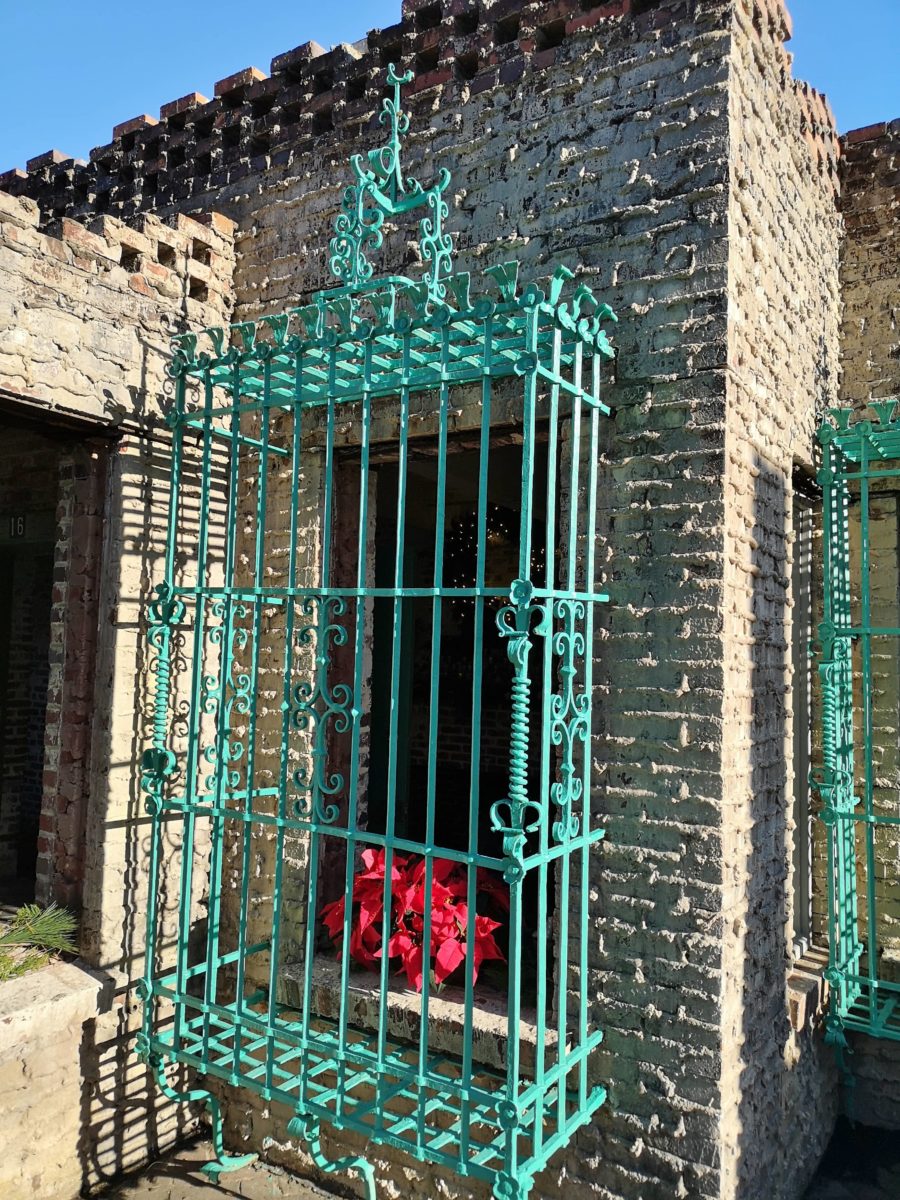
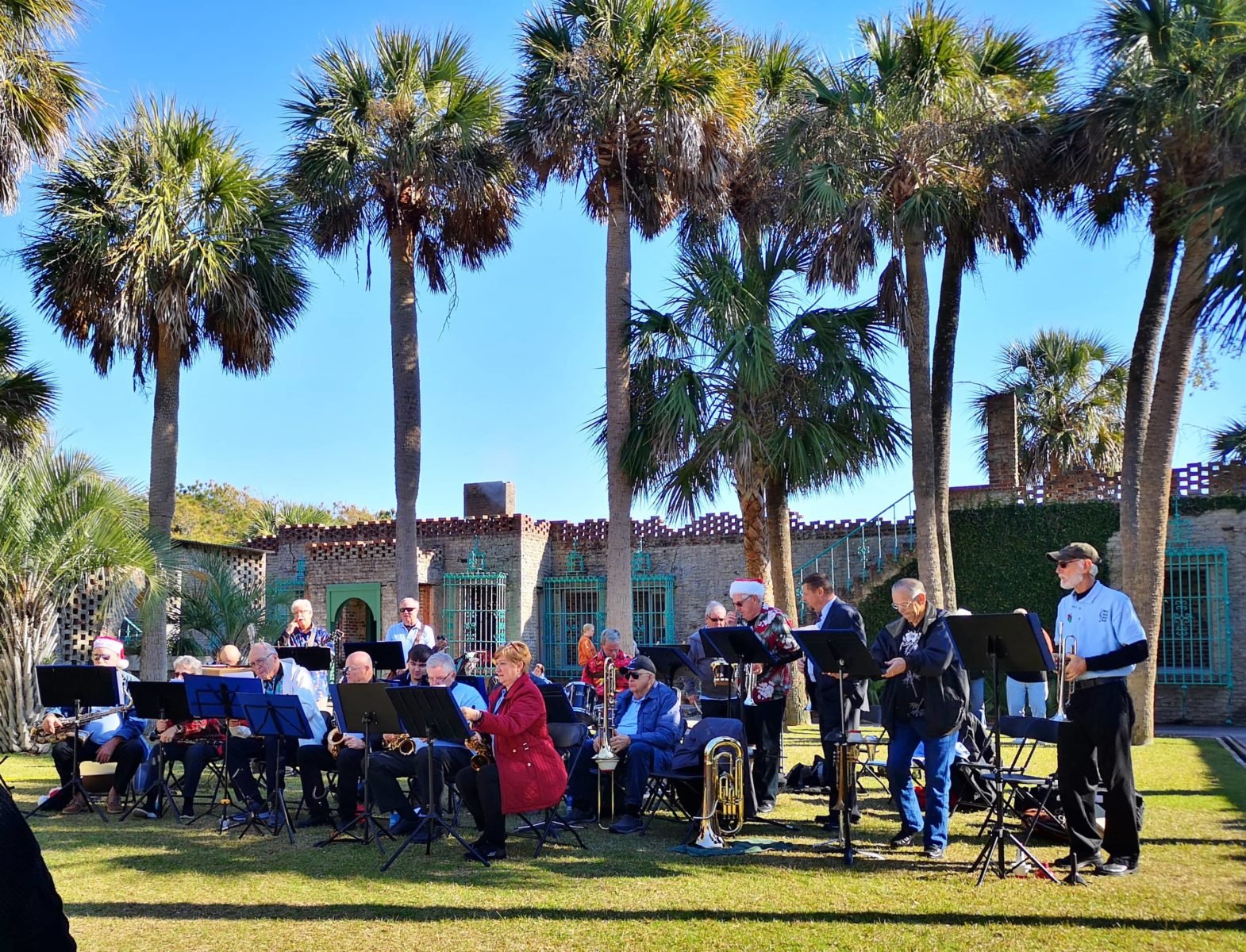
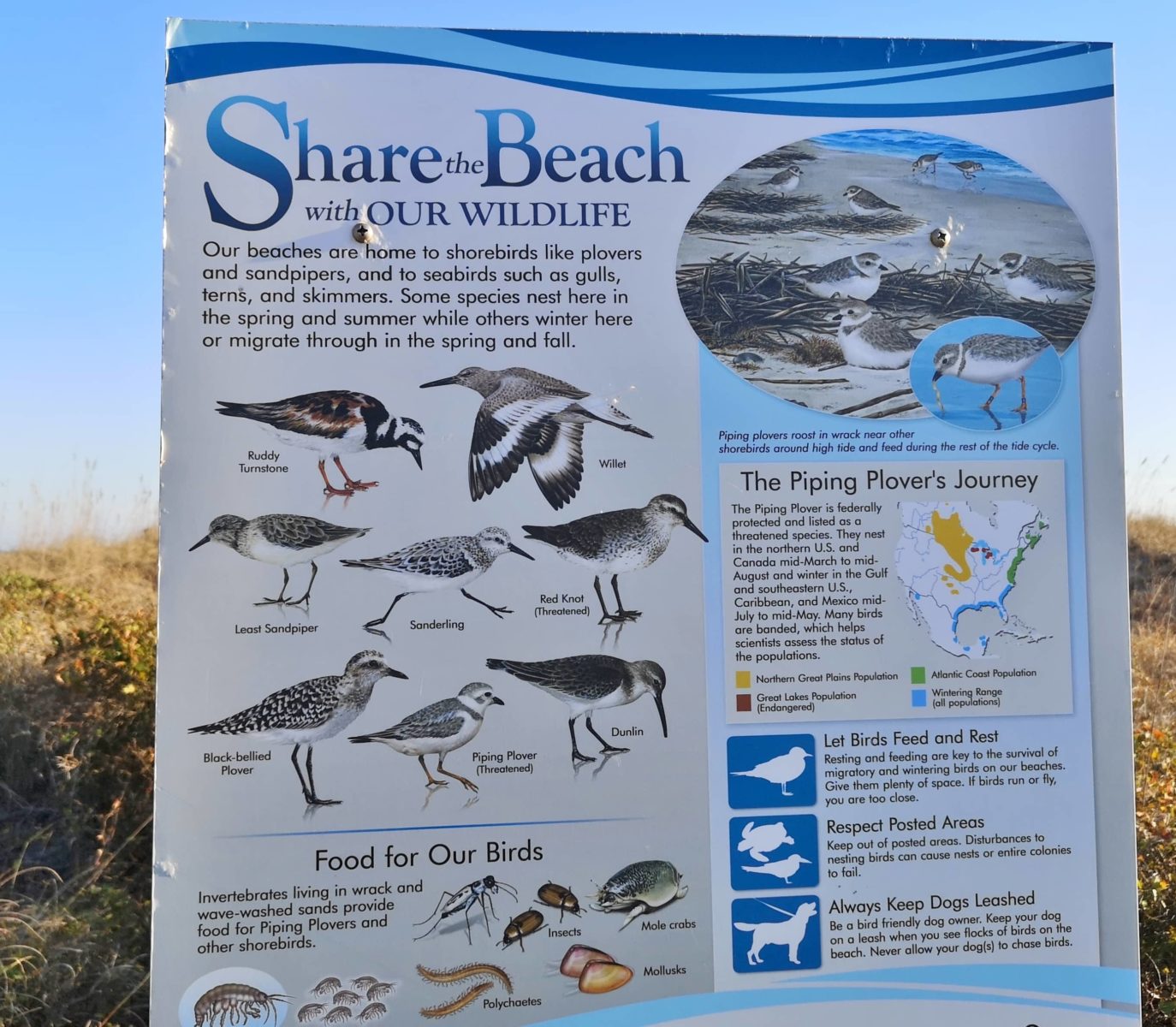
We heard about the Nights of a Thousand Candles display at Brookgreen Gardens, which is just across the highway from the Park. We were very lucky to get two tickets for Sunday night, so we drove the RV over and were in line to enter the grounds at 3 pm when the gates opened.
Brookgreen Gardens is a 9,100-acre sculpture garden and wildlife preserve built by the Huntington’s former property, which is now a National Historic Landmark. In December, lights are placed throughout the garden and 2,700 candles are hand lit every night! You can walk around to see the lights, but they also have tents set up with music, food, and drinks. We were very glad we went at opening, as this allowed us to walk around in the daylight to see the gardens and sculptures and get oriented before the lights and candles were lit up. They have tons of volunteers throughout the grounds to give you guidance and to light the candles. While exploring, we enjoyed some sparkling wine so we could get the Christmas glasses to wear. My glasses converted the candles and lights to elves and Sharon’s let her see angels flapping their wings. We saw Celtic musicians with an electric bag pipe, a soul group, an actor (Bill Oberst Jr.) playing out Scrooge’s story, and a choir singing Christmas songs. We were super impressed with the food in the dining tent; I had a flounder dinner and Sharon had she-crab soup and hushpuppies. As you will see from the photos, this place is absolutely magical!
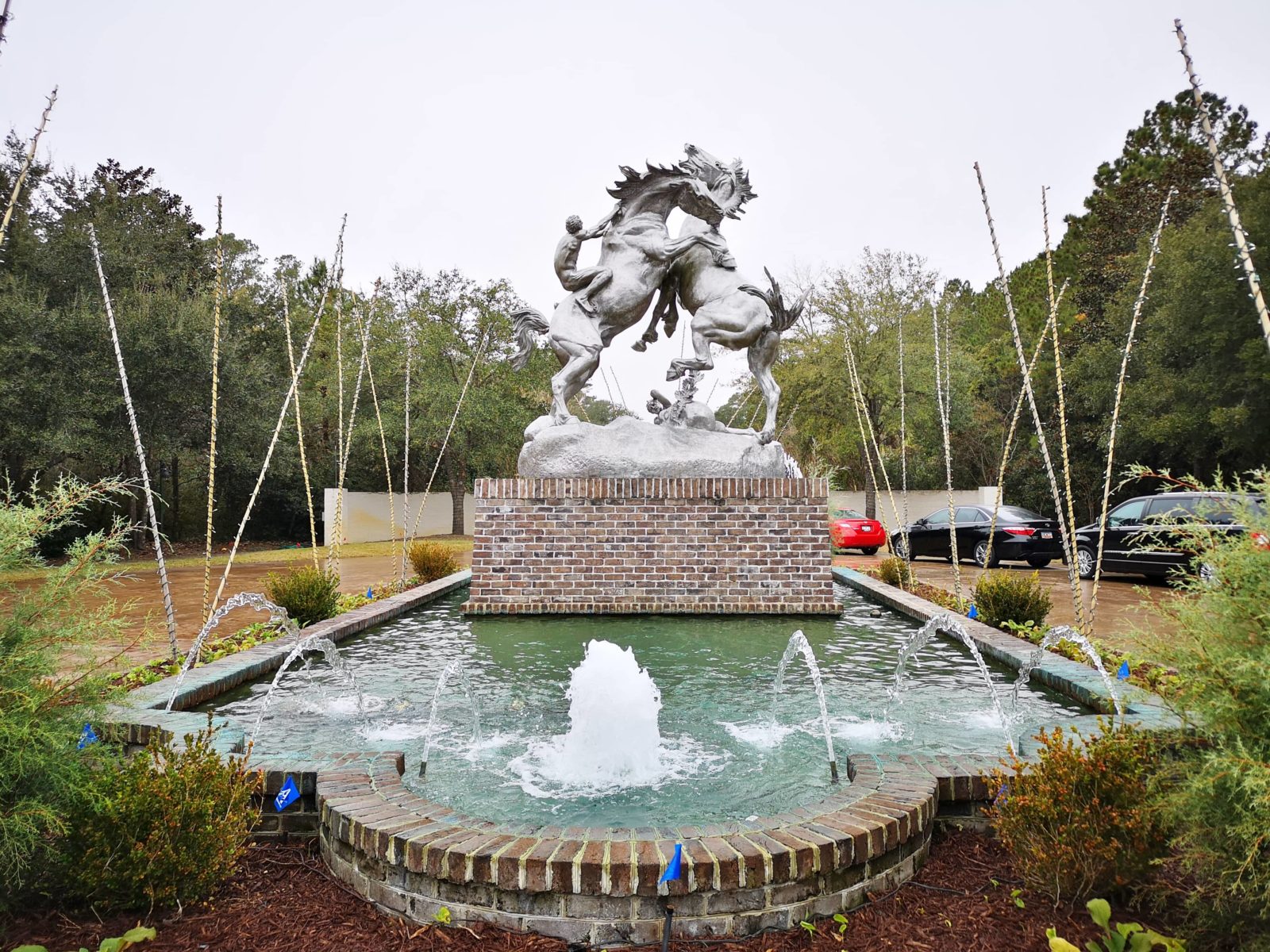

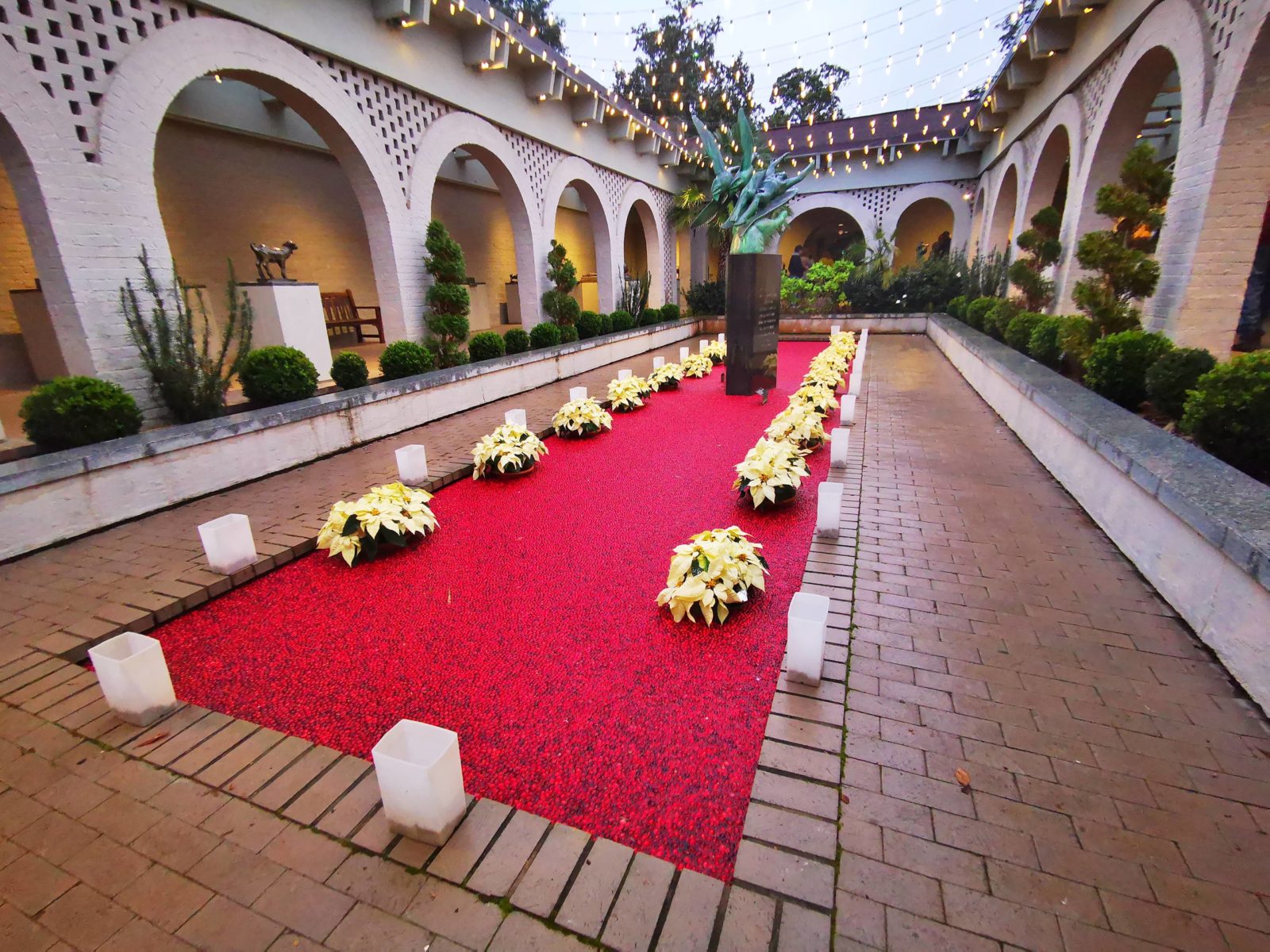
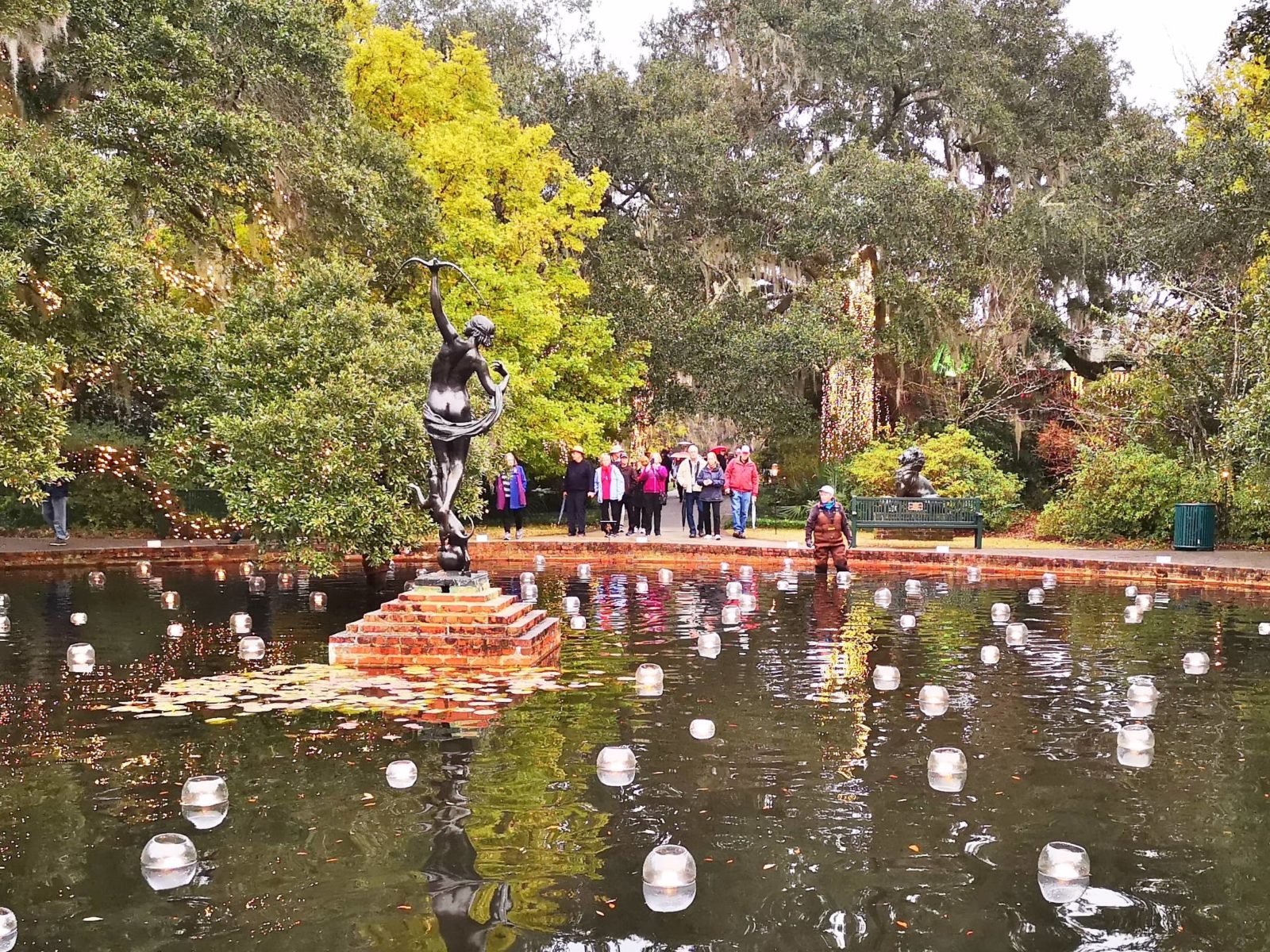
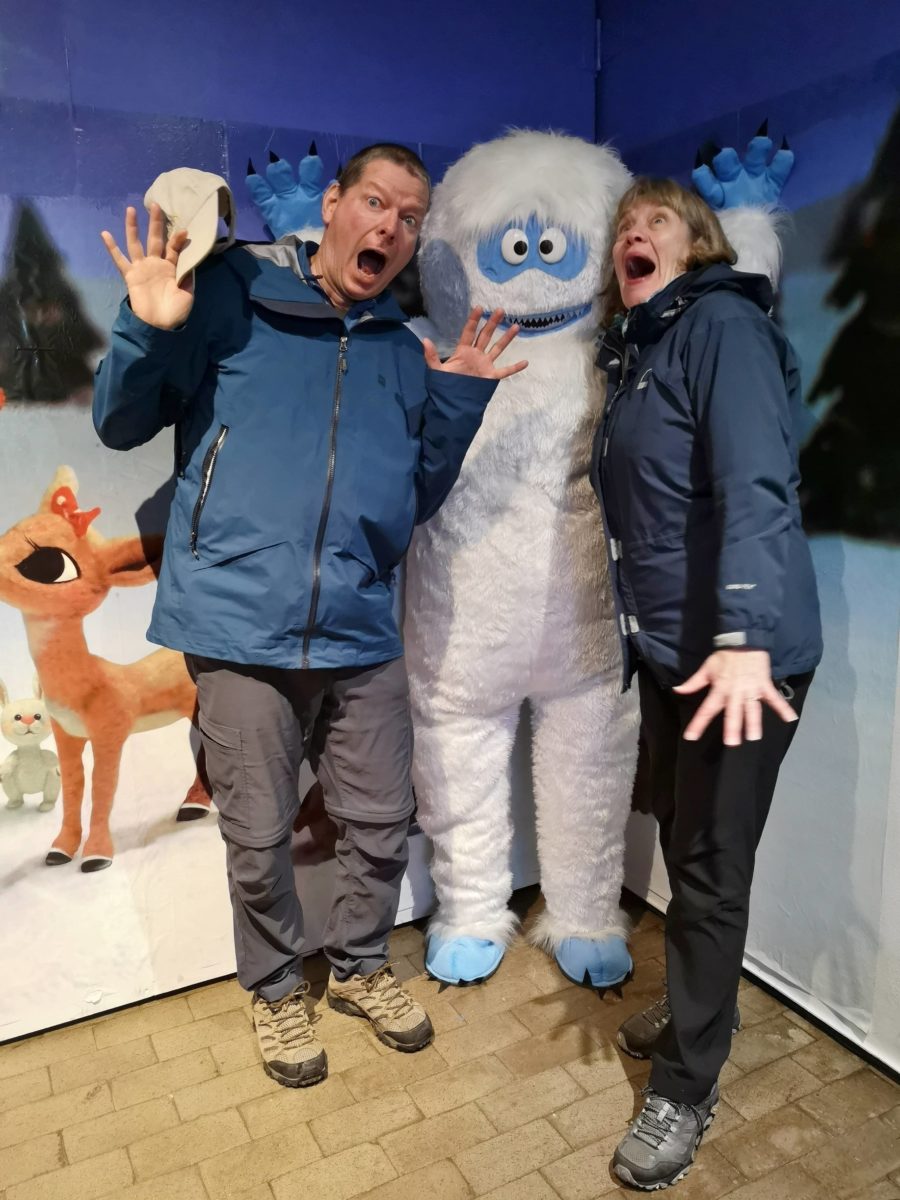
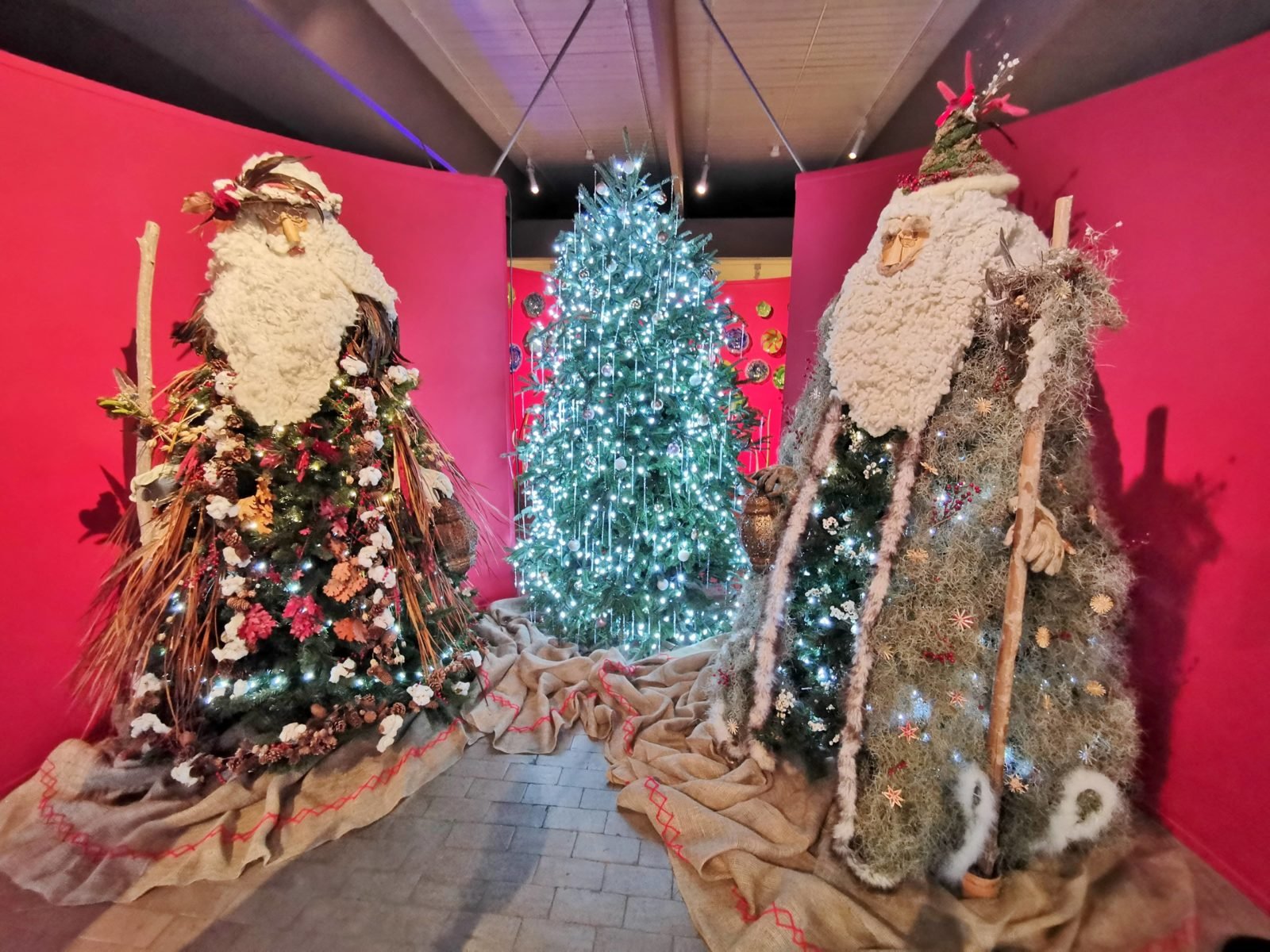


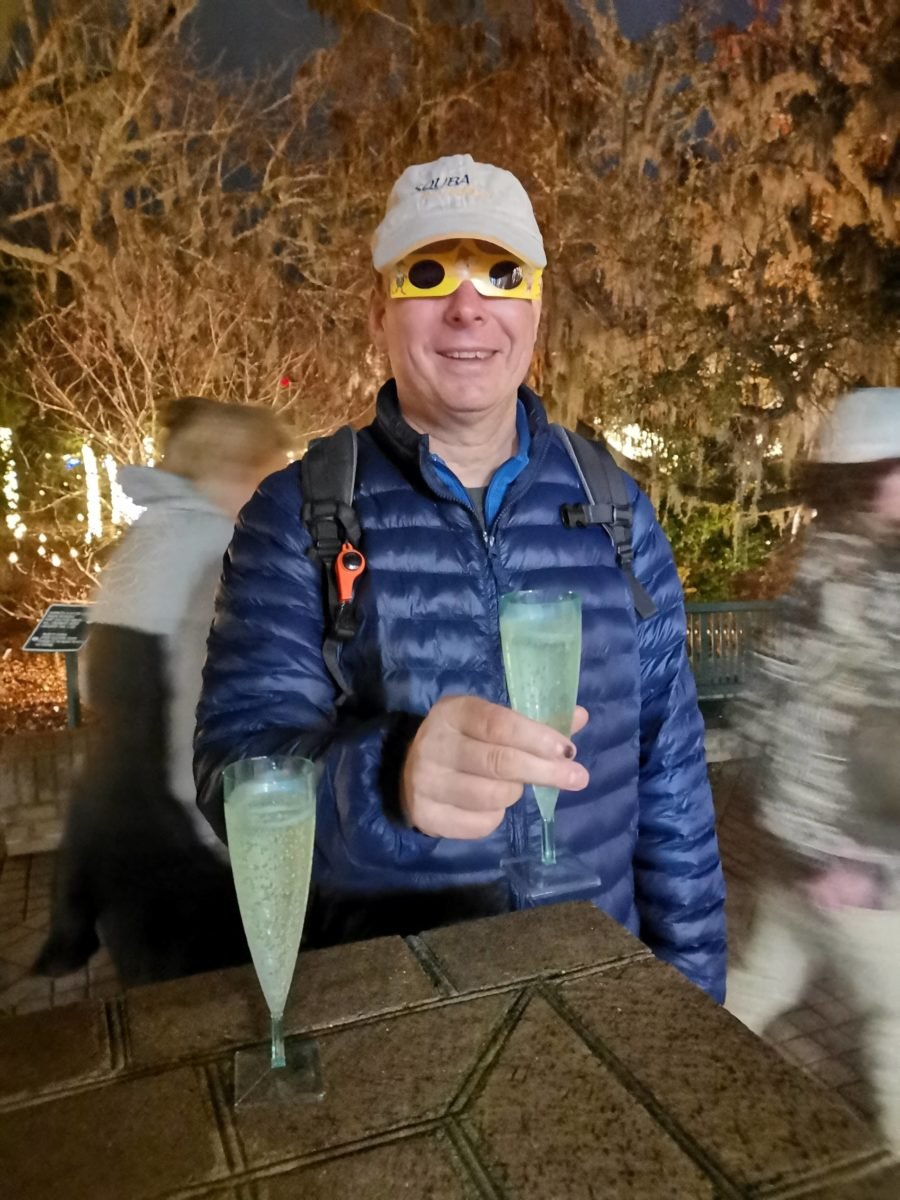

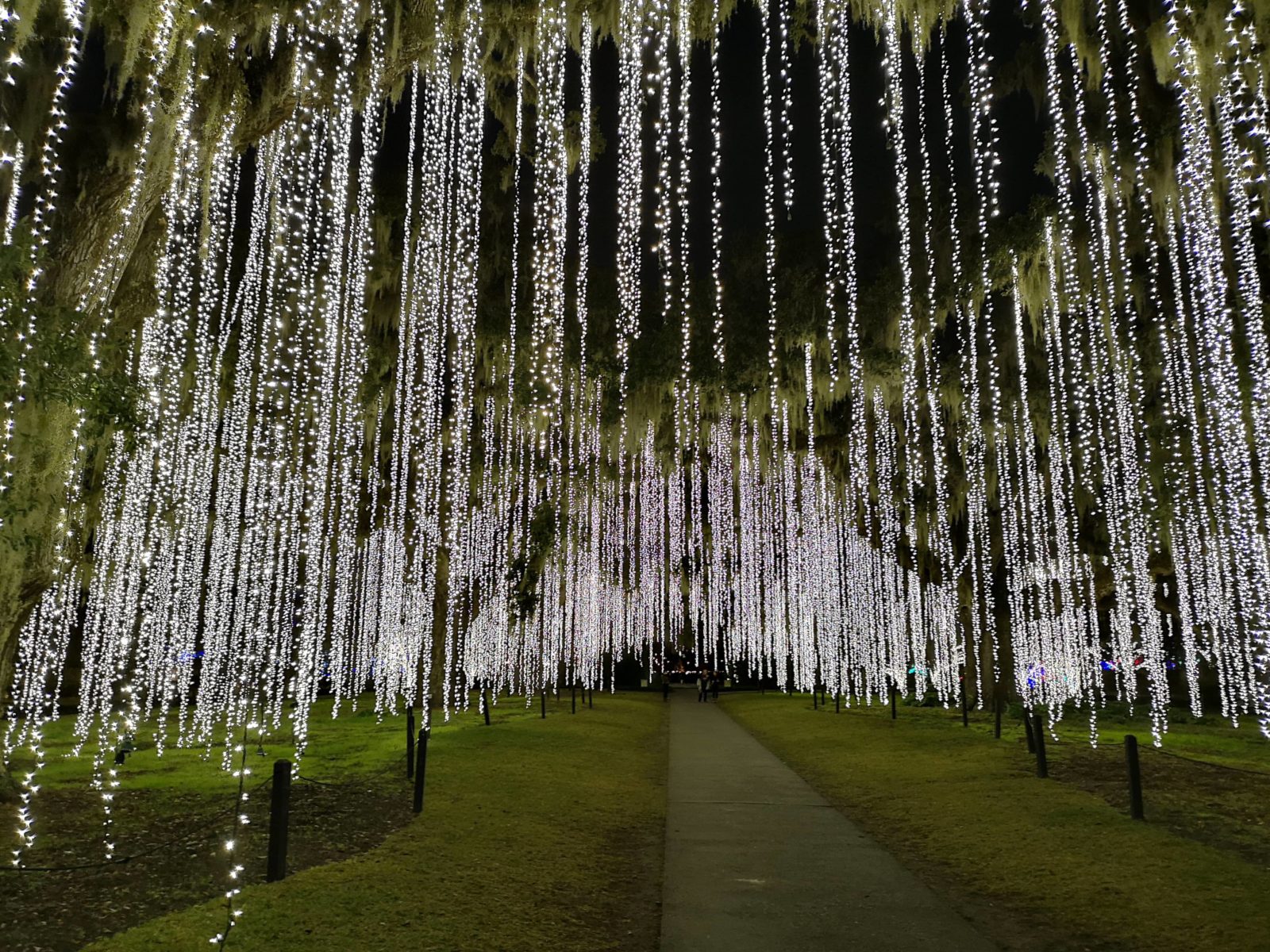
When we left Huntington Beach State Park, we headed to Hampton Plantation State Historic Site. This plantation originally had rice fields on Hampton Island, and the mansion was built on the property between 1730 and 1750. Several wealthy families ran the plantation over the years, with many slaves as the labourers. The Rutledge family eventually donated the plantation mansion to the state, although they still hunt on Hampton Island itself. We were the only visitors there, so we got a personalized tour of the mansion from the ranger on duty. The family kept the original furniture, so the tour features only the architecture of the building. After finishing the tour, we hiked on some of the trails around the grounds. We stayed that night at Buck Hall Recreation Area for $20 a night, right on the Intracoastal Waterway.
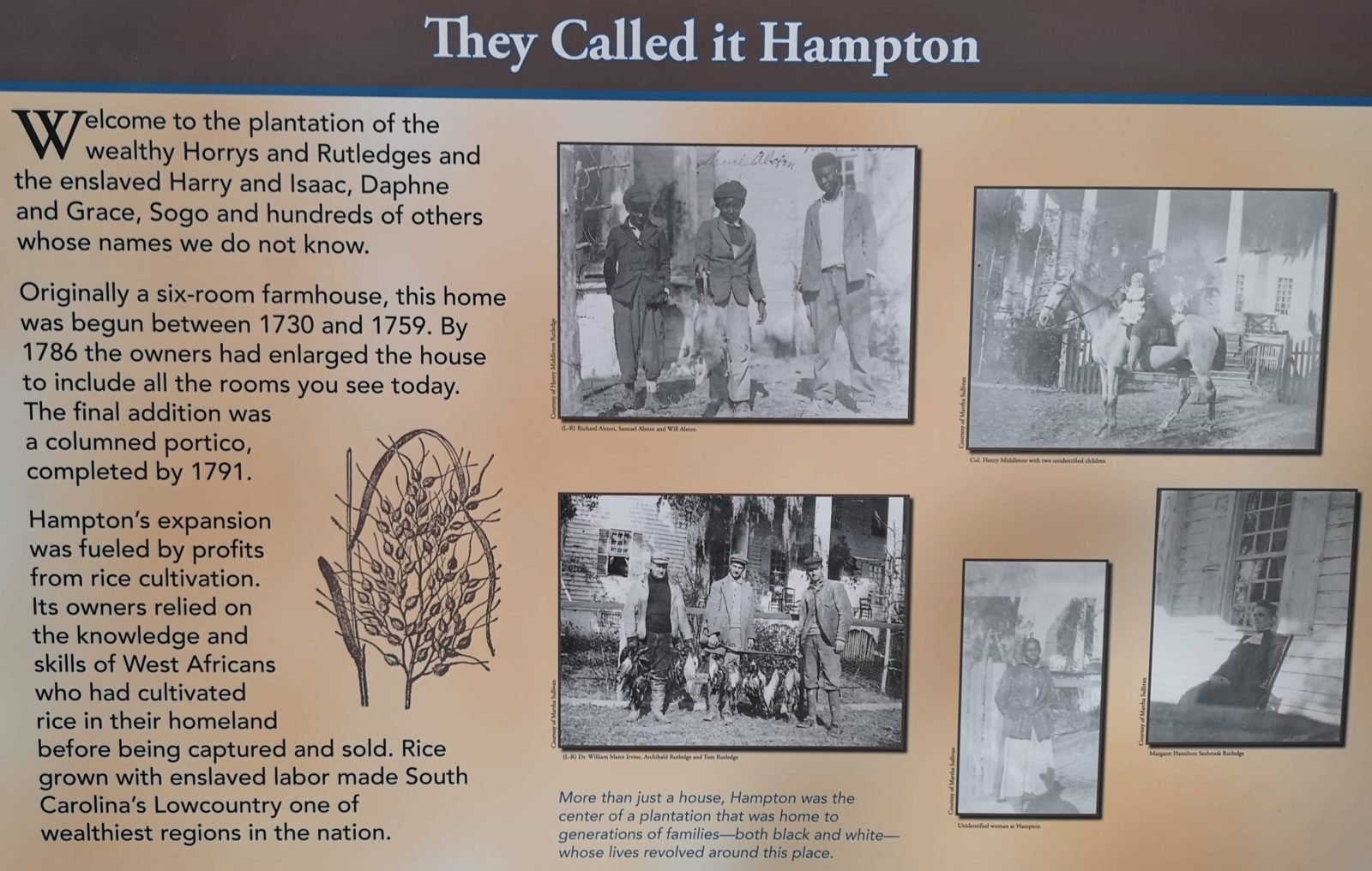
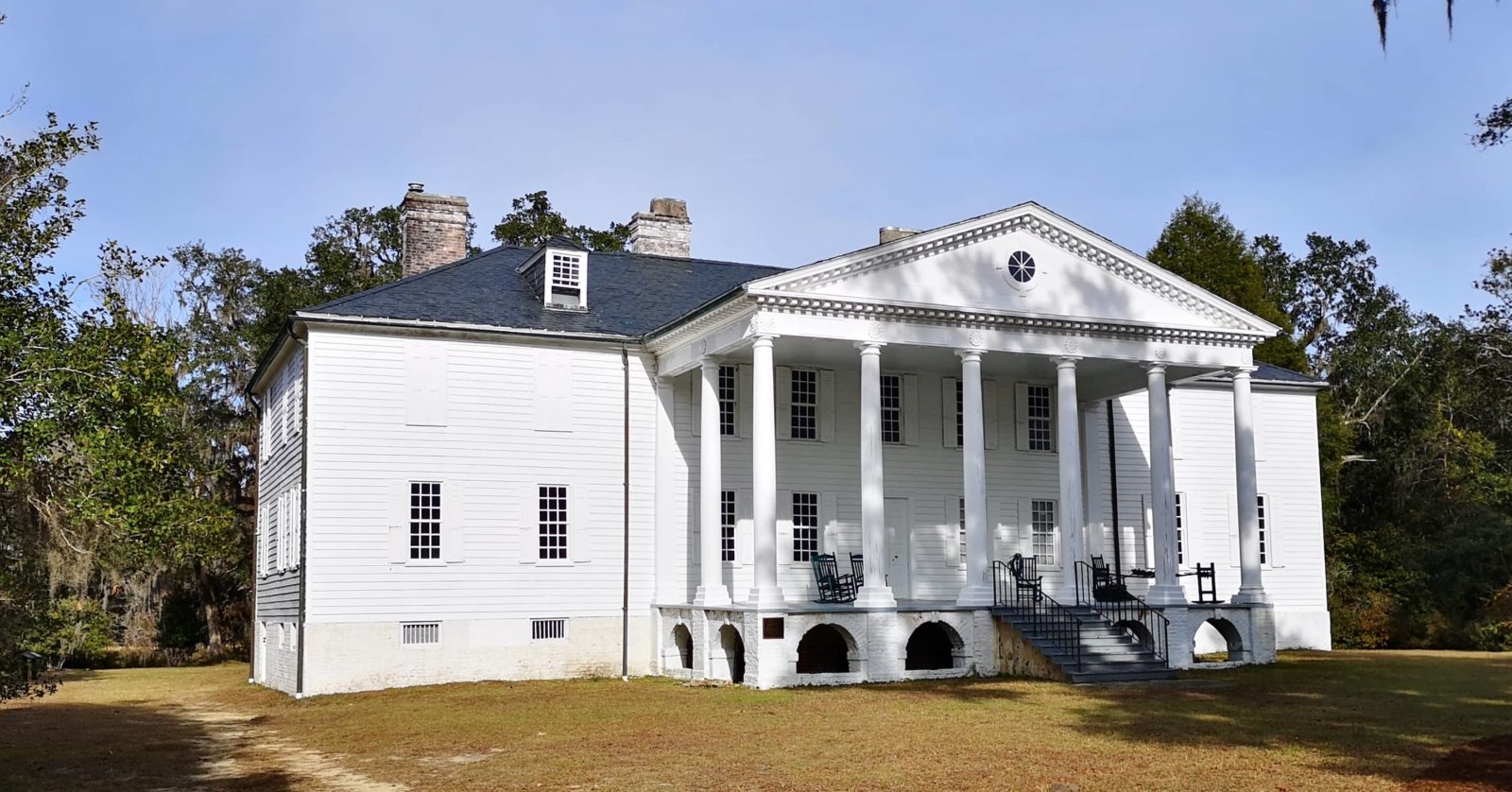
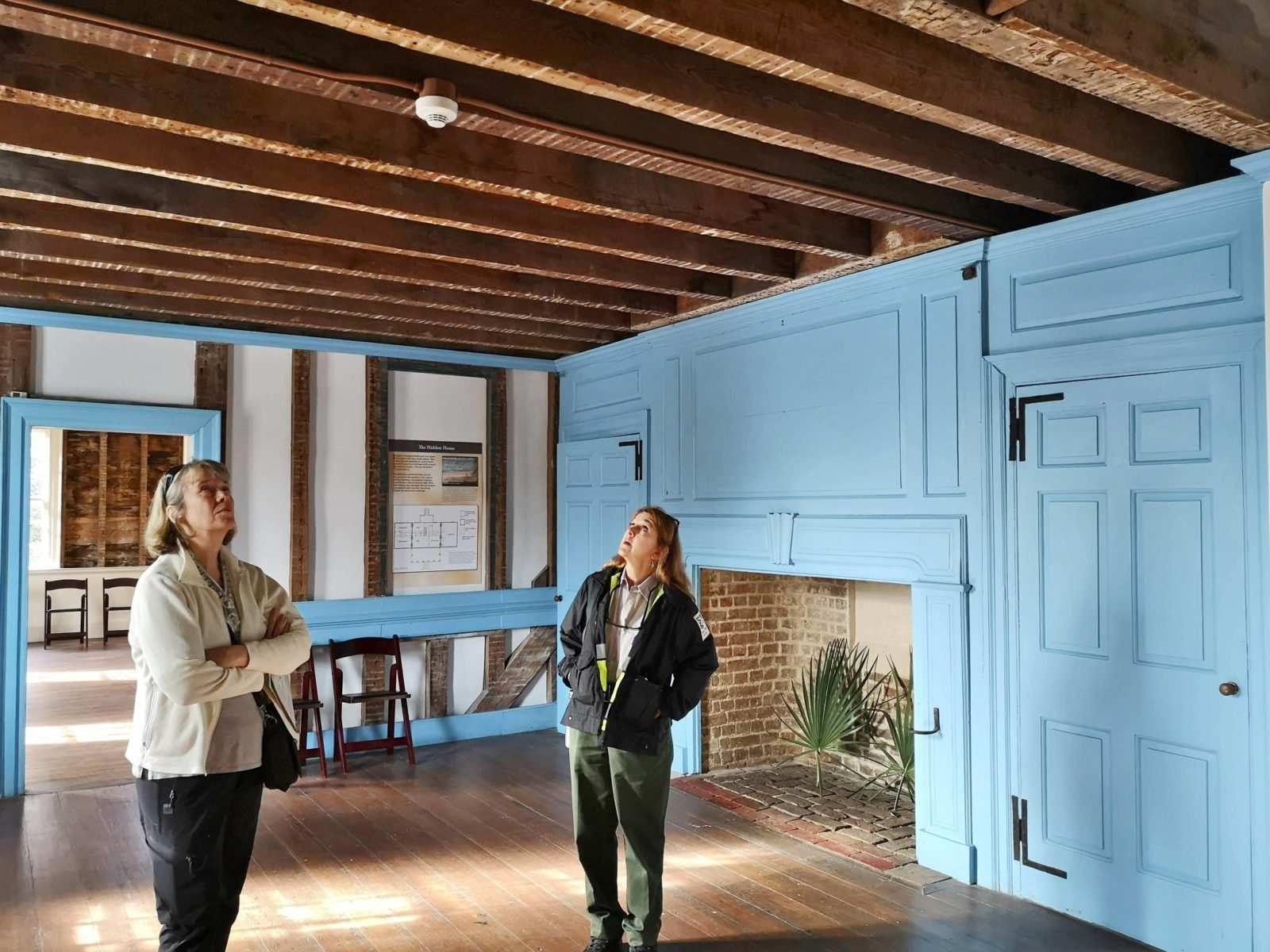
Our next location was James Island County Park, just outside of Charleston. We were able to check in early, which was great because it was 80 degrees Fahrenheit – perfect weather for a bike ride around the Park.
James Island has an annual Holiday Festival of Lights show, so we paid $3 for the shuttle to drive us around the Park at night to view all the fun light displays. (Turns out there was one other LTV in the Park, and they happened to be on the shuttle as well.) The Park has four year-round staff who look after the lights, and several volunteers – each year, they change all the light bulbs in the displays, to a current estimated count of 5 million lights! Every year three new exhibits are added, so the show keeps getting larger. While there were plans to switch to LED lights in all of the displays, when they changed some of the older ones to LED, the new lights were too bright and the display could not be seen properly, so the lights were changed back. Each night costs between $1,200 and $2,000 in electricity, which is the reason it costs $20 per car to drive through the lights show. After our tour, we checked out the carnival area, and of course Sharon had to spend time in the shops!
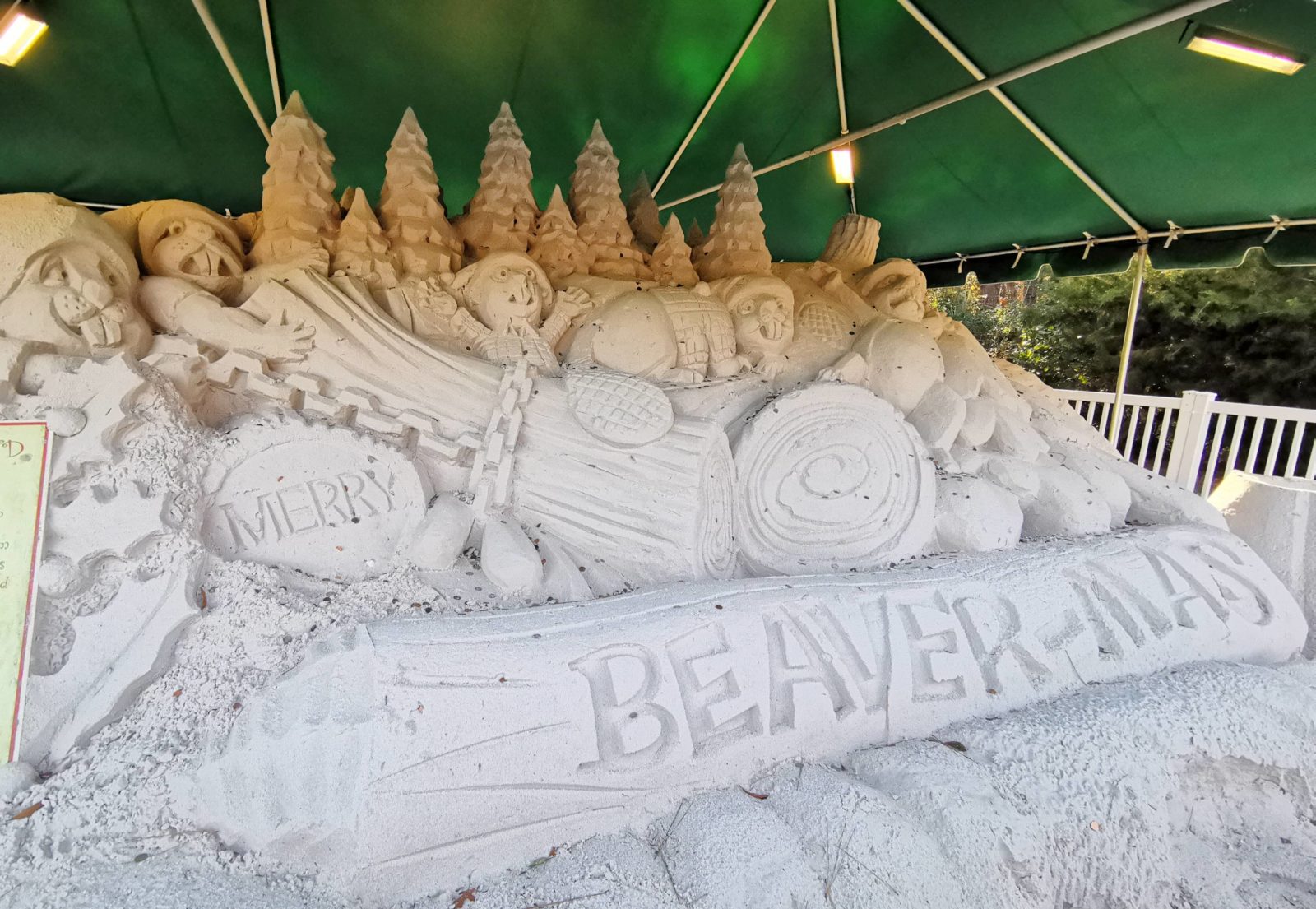
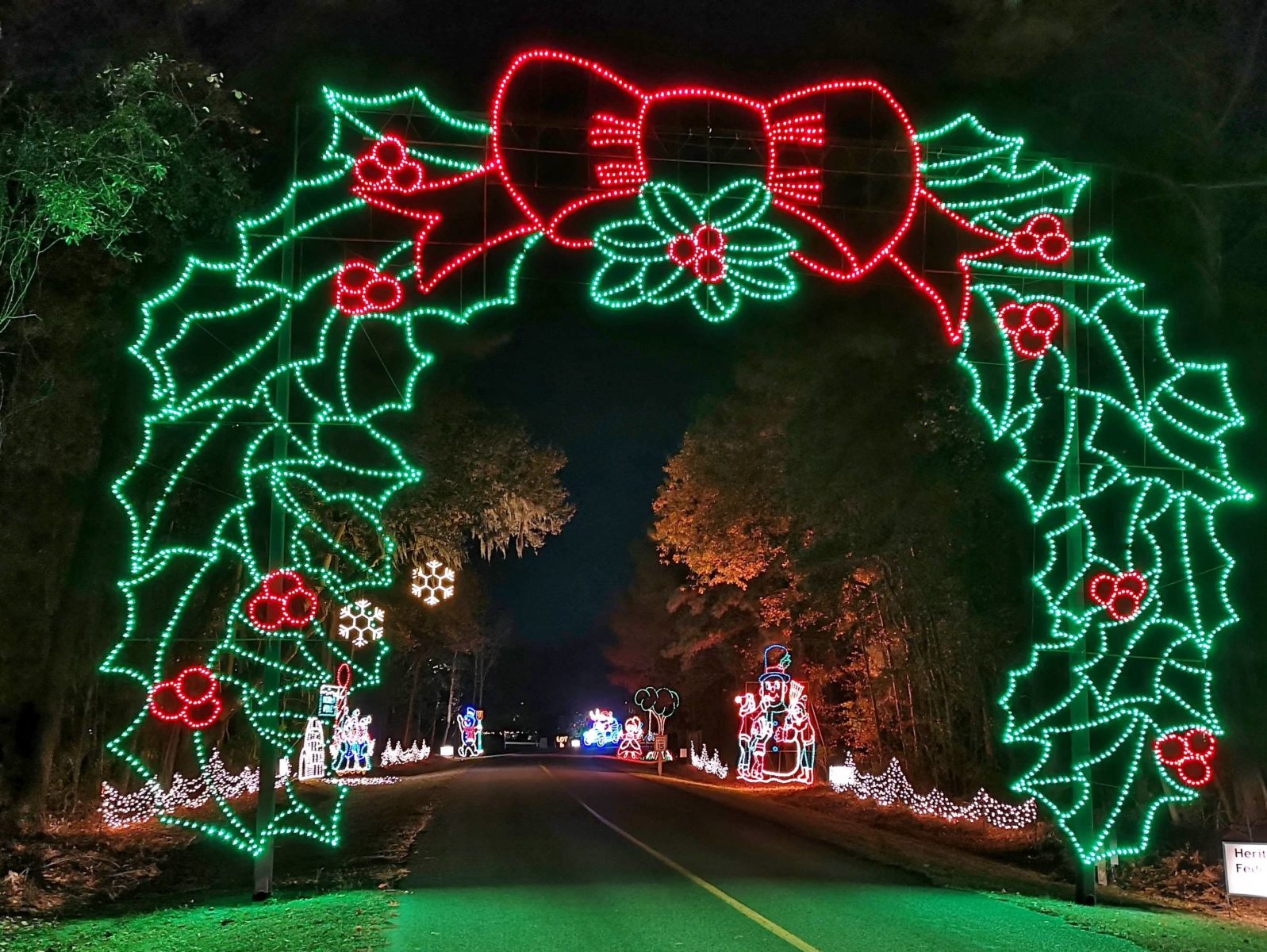
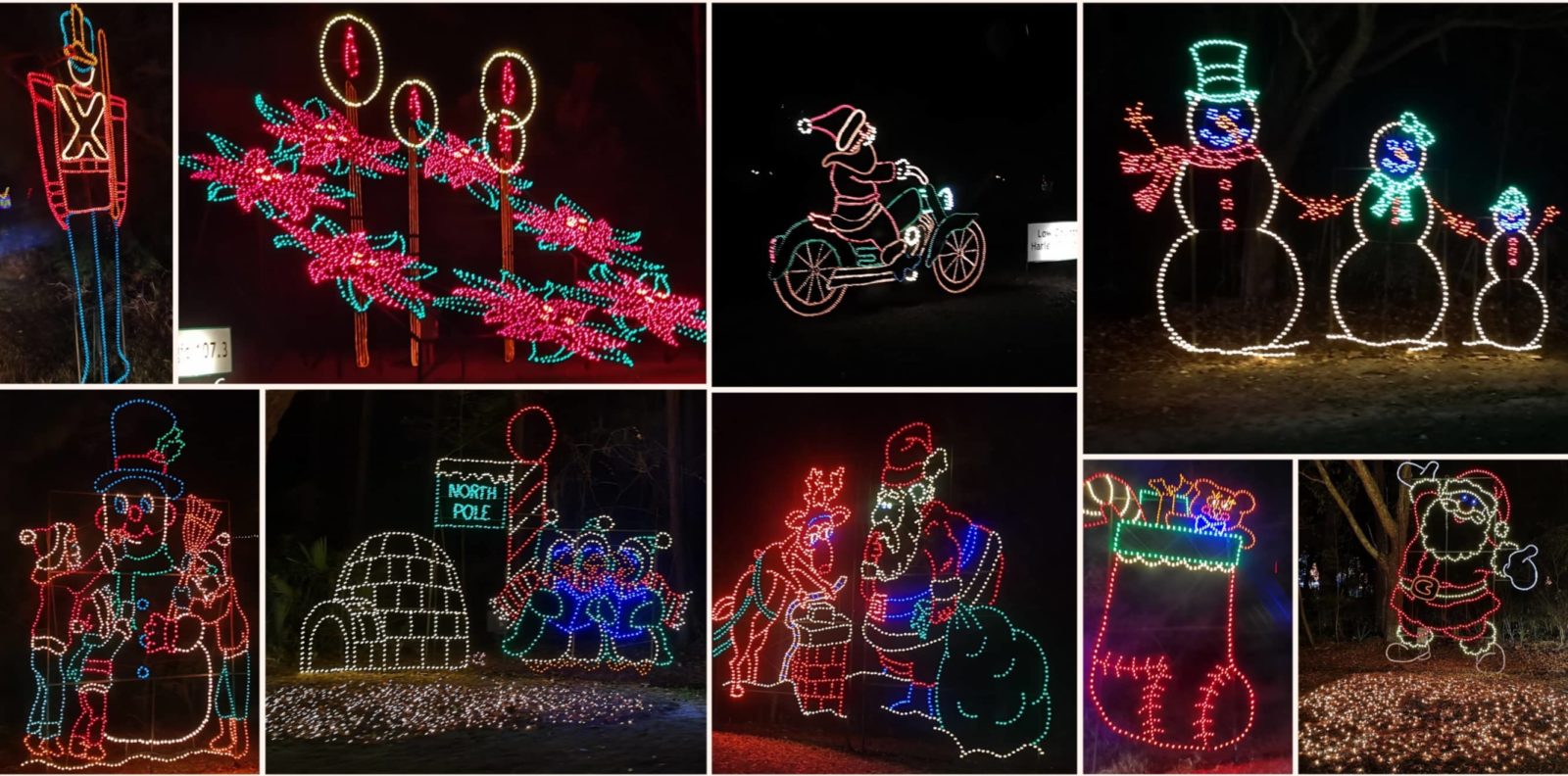
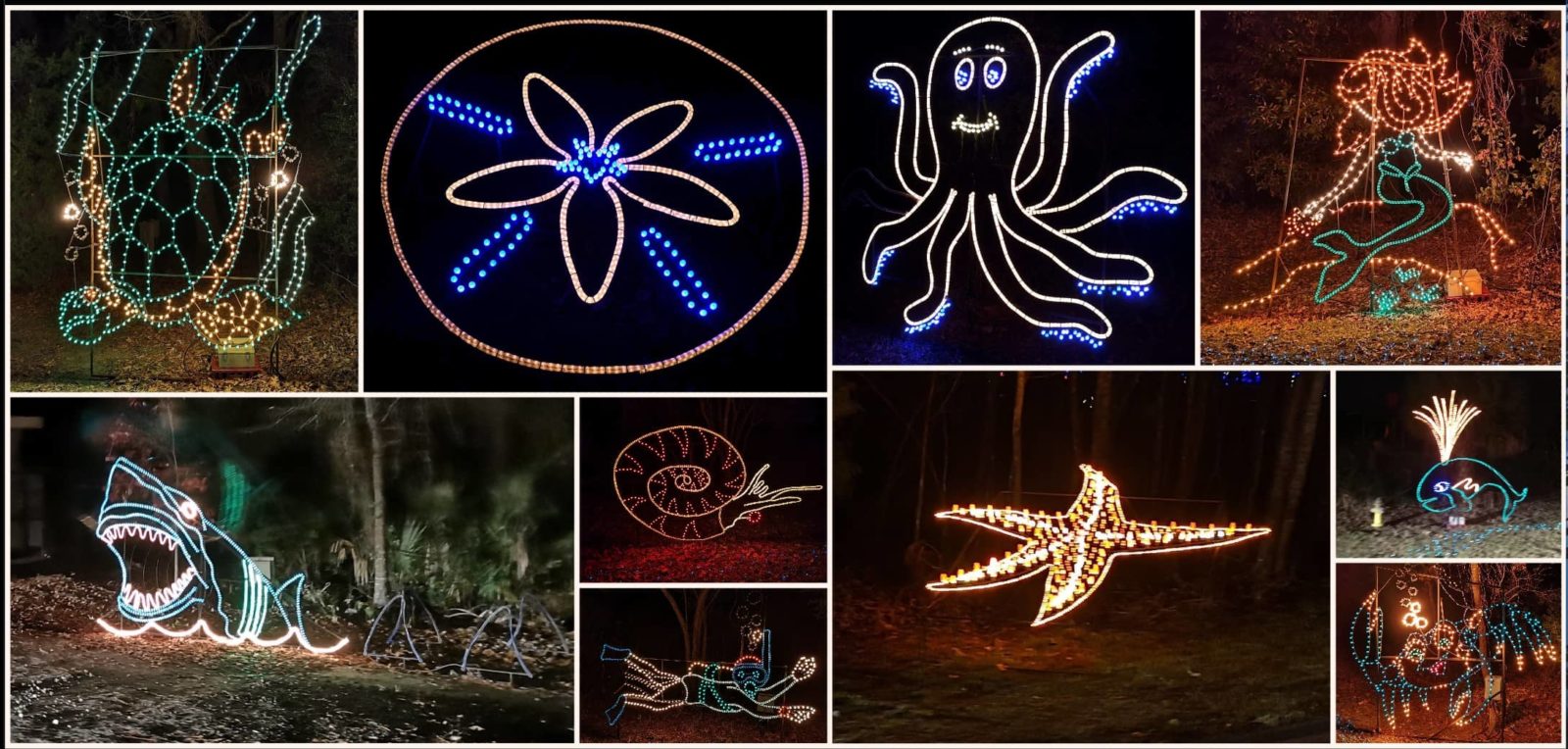

We chose James Island because it has a shuttle that will take you into downtown Charleston for $10 per person. So the next morning, we got dropped off at the Charleston Visitor Center, got a few sightseeing tips, and then headed out on a 17 km walking adventure in Charleston.
Charleston has a lot of history, dating back to the 1600s. Our first stop was Charleston City Market, where we wandered through the craft seller booths, although we did not buy anything due to limited space in the RV. We followed a walking tour from our CAA tour book, which pointed out some of the more interesting buildings and architecture in the downtown area, including the oldest liquor store in North America, established in 1686. Ok, we might have done some shopping here!
We also saw many churches and houses in the Palladianism style, which was notable for the front door leading to a porch on the side of the house instead of entering the house itself. There are lots of restaurants in downtown Charleston, but we had a recommendation to go to Hyman’s Seafood (established in 1890) for lunch. Just like all the buildings we saw, the restaurant had lots of history, including all the famous people who had eaten there (Martin Sheen and Jodie Foster ate at our table). After lunch, we went along the harborfront and looped down to Battery Point before returning to catch our shuttle at 4 pm.

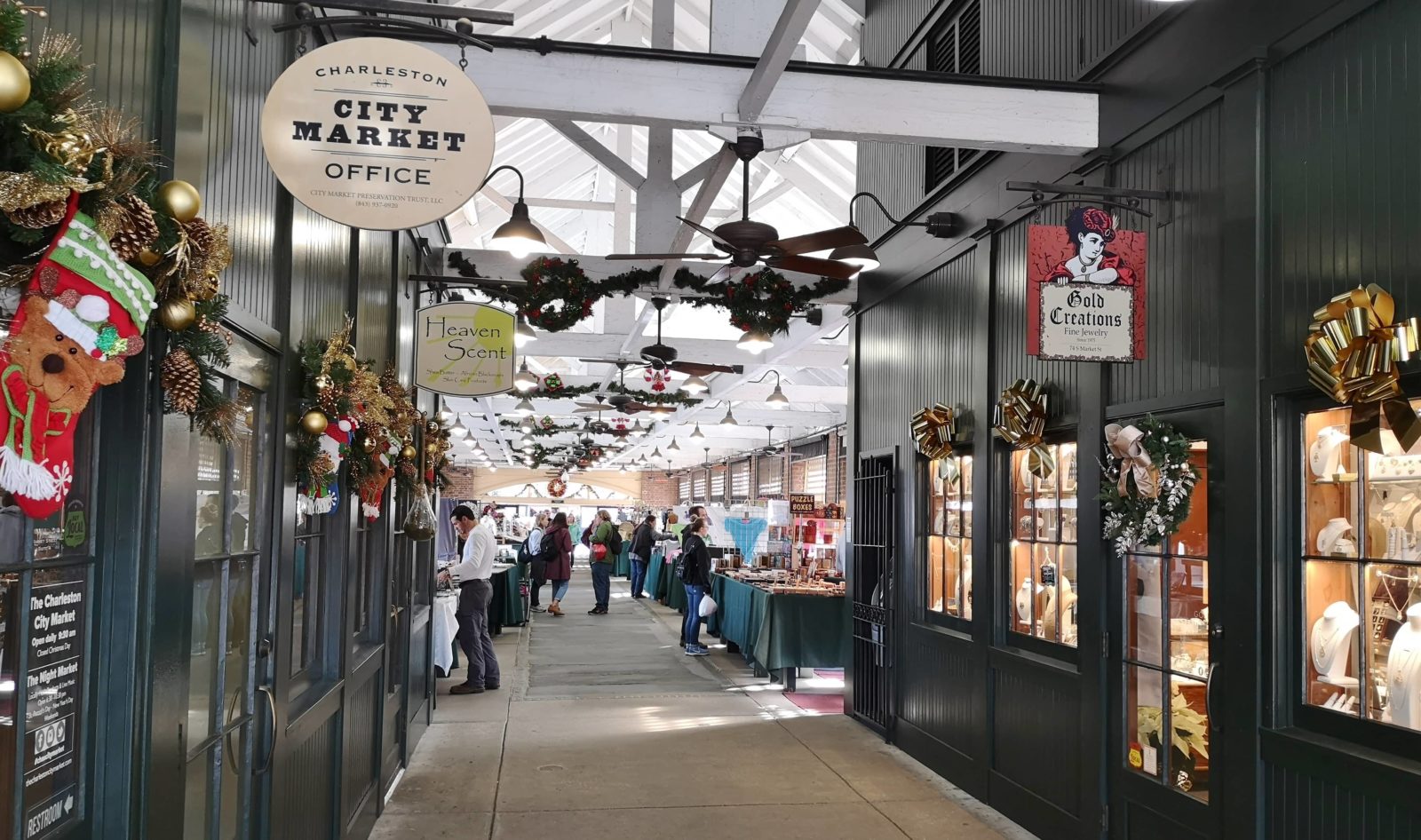

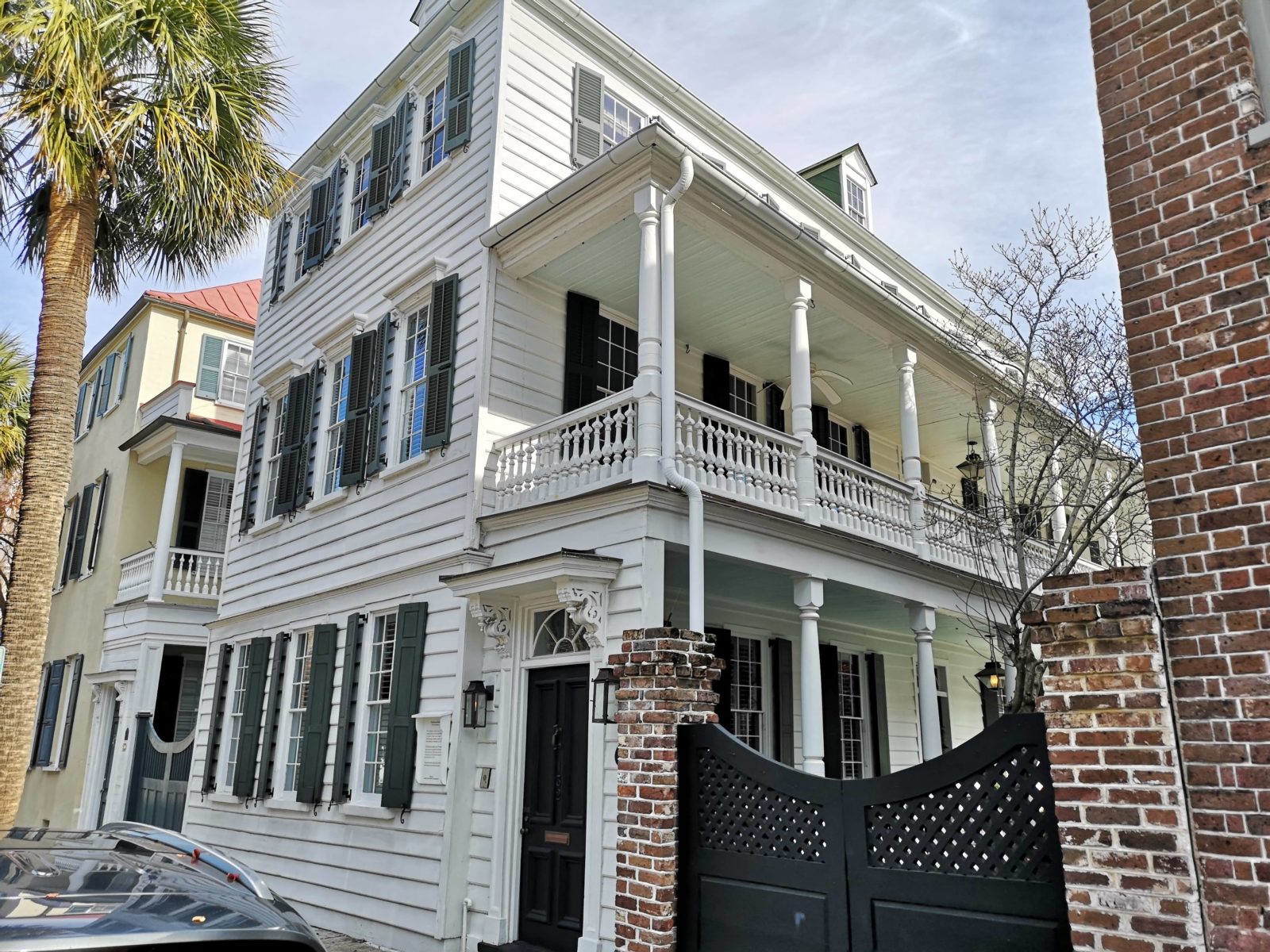
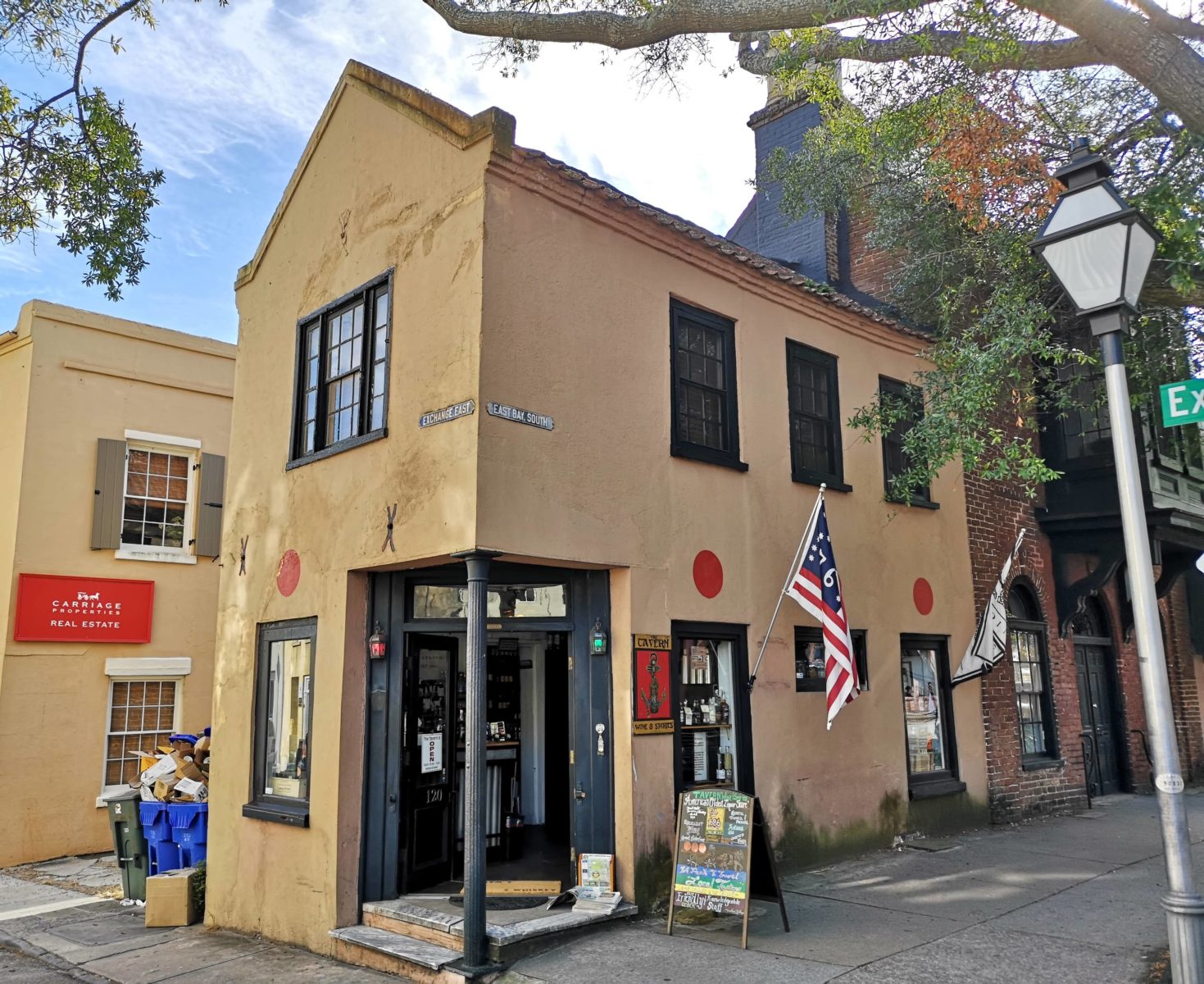
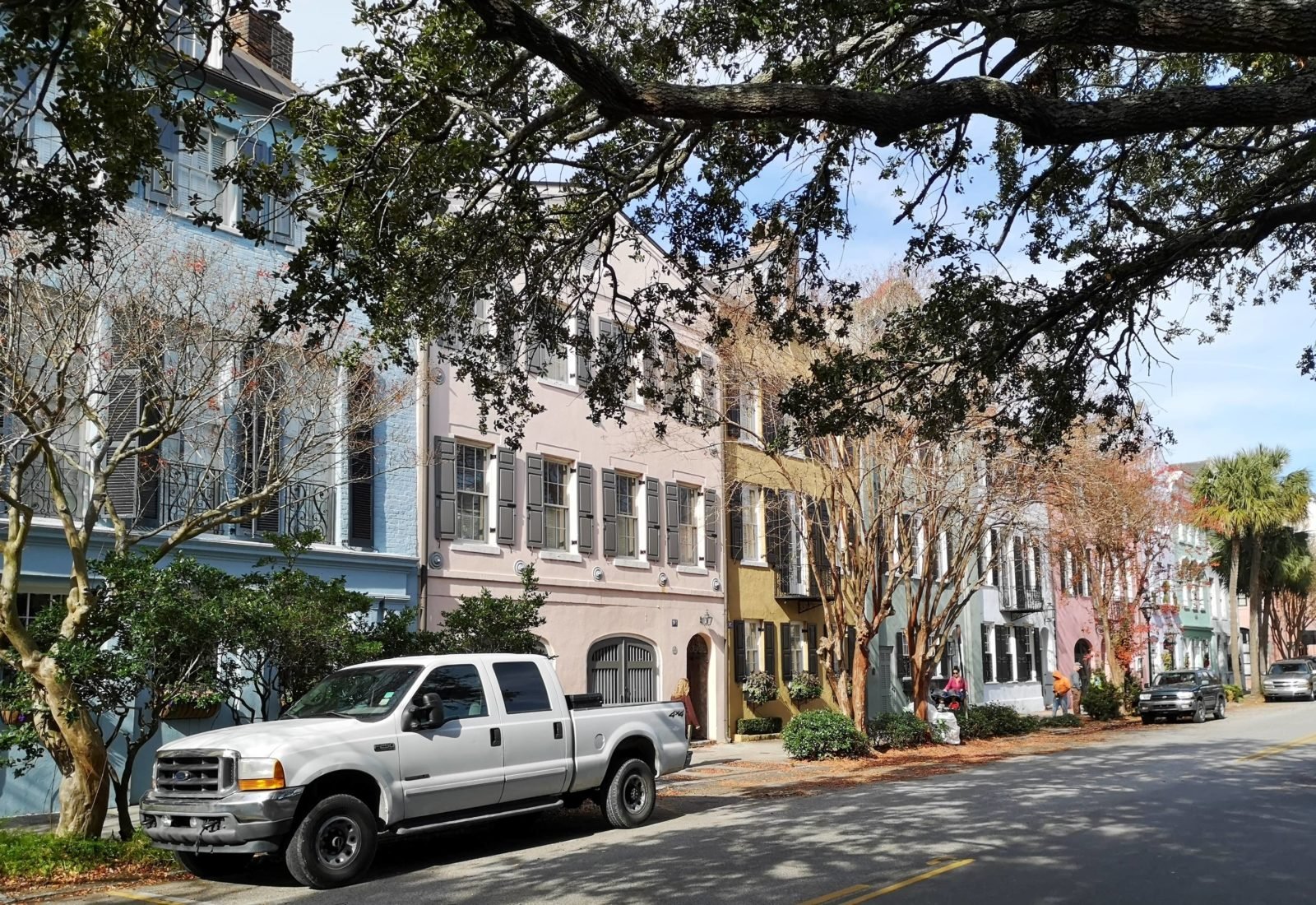

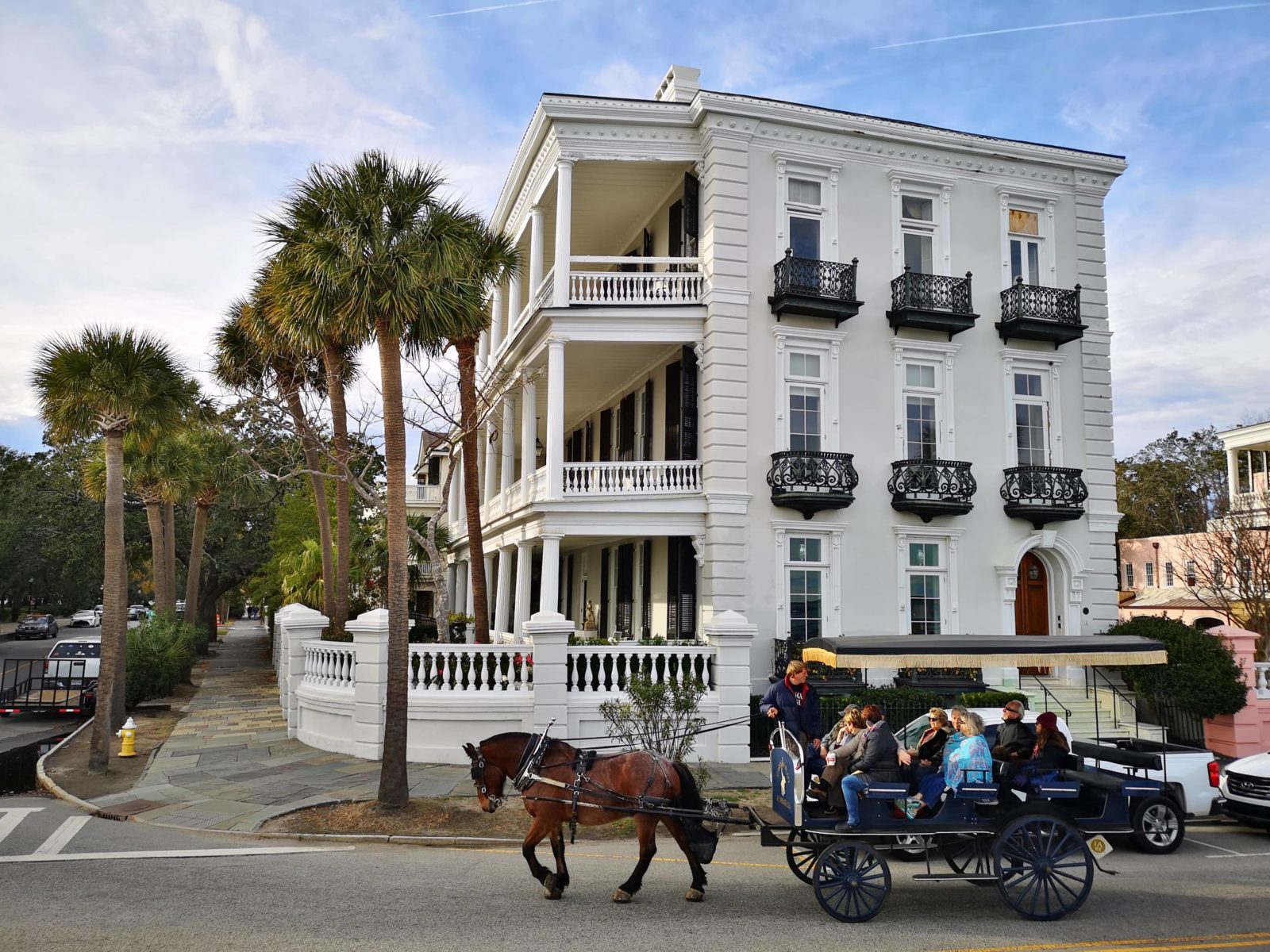
On our drive to the next state park, we wanted to stop to see the Angel Oak tree, but unfortunately the grounds were closed for some staff training, so we had to take our pictures through the fence. This live oak tree is one of the oldest trees on the east coast and is estimated to be 400-500 years old. It stands at 66.5 feet tall, with a circumference of 28 feet! The longest branch is 187 feet in length and the tree gives shade to a 17,200 square foot area.
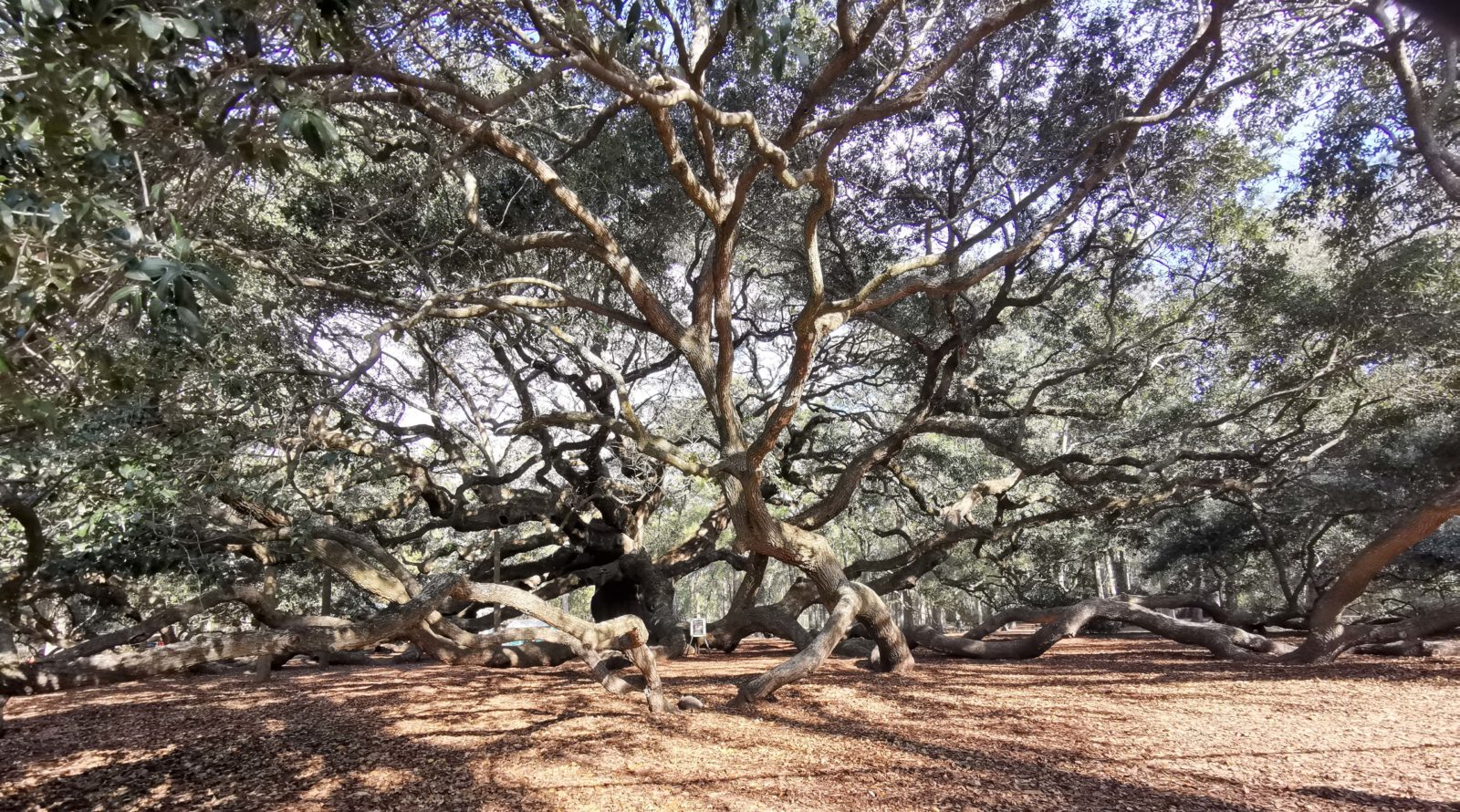
The next stop was Charleston Tea Garden, where we learned many interesting facts about tea. We first did the trolley tour around the plantation to learn about how they grow and look after the plants, and then we did the self-guided factory tour. The factory was not producing tea when we were there, but videos explained the steps in the process. In the gift shop were lots of free samples of both hot and cold teas. Here are a few of the key facts:
- This tea plantation on Wadmalaw Island is the only place growing and making tea in North America.
- The camellia sinensis plants grow for four years before tea leaves can be regularly harvested from them.
- Plants are trimmed to a set height, and then only the new growth leaves above this height are harvested for tea.
- During the prime season, leaves can be harvested every 21 days.
- To process the tea, wilted leaves are put through a machine called a rotovane to rupture the cells, after which the leaves are oxidized, followed by the drying stage.
- The three types of tea – black, oolong, and green – are created by varying the length of time oxidizing the leaves. Black tea oxidizes for 50 minutes, oolong for 15 minutes, and green for zero minutes. This variation creates different color and flavor.
- Five pounds of fresh leaves will make one pound of tea, as 97% of the moisture is removed and 80% of the weight.
- We will never drink decaffeinated tea again, as the process uses the same chemicals as paint thinner and nail polish remover to eliminate the caffeine! Not really appetizing, is it? Heat releases the caffeine, so to get 65% less caffeine in your tea, throw away the first cup and steep a second cup. In the south, they enjoy their cold-steeped tea, which also has less caffeine.
- To make the perfect cup of tea, bring cold water to a rolling boil, then, using one teaspoon of tea per cup, pour the water over the tea (don’t put the tea into the water). Brew to desired strength (anywhere from two to six minutes).


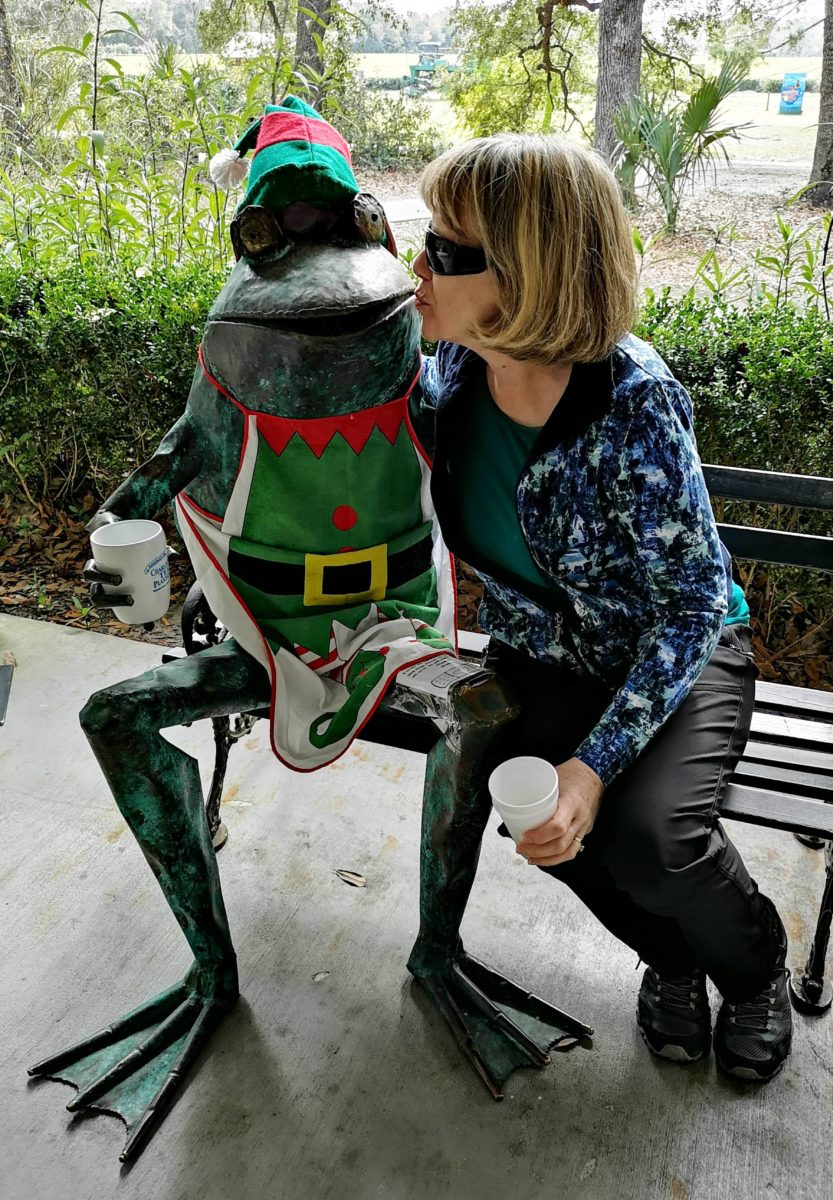
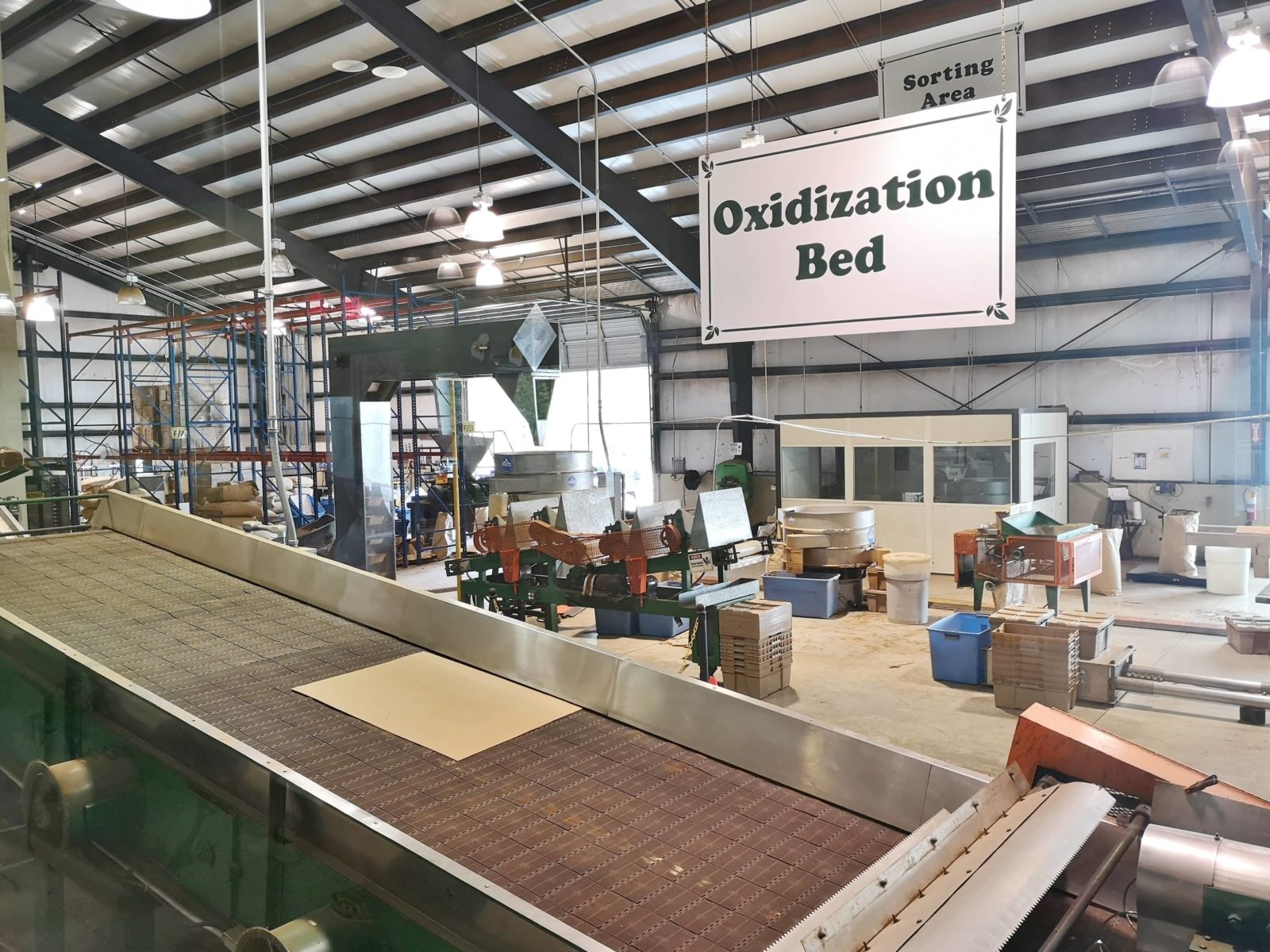
Next up, we decided we would stop at Deep Water Vineyards for a wine tasting, since we were relatively close. It turned out the vineyard is connected to Firefly Distillery, so we got to do two sets of tastings. At Deep Water, we chose to go with the “honeymoon package”, which allows each person to choose six wines, with the first five being different from one another so you can sample each other’s choices and therefore actually try 11 different products.
The primary grape grown in this area is muscadine, but Deep Water also brings in some grape varieties from California to blend. At the end of our tasting, we were able to try the grape juice itself, and we bought a couple of bottles of that as well as some wine. Across the patio was the distillery, and there we shared a tasting of six different products. Firefly has a large variety of vodkas, moonshine (whiskey without the aging), whiskey, rum, and liqueurs. Naturally, we also bought several of their products. The distillery will be moving to Charleston soon, as they do not have enough space at the current location and the county tax laws are more favourable.
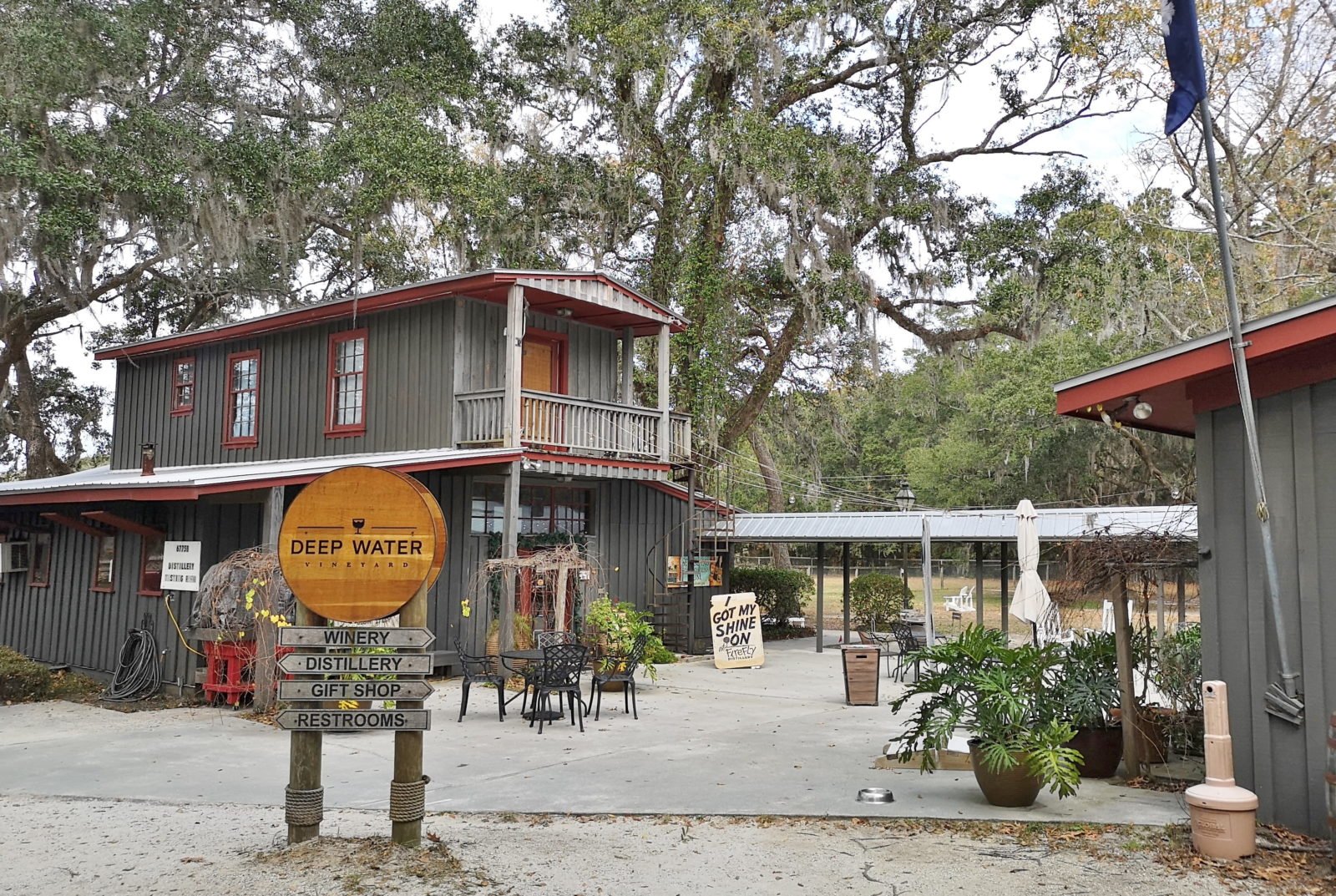
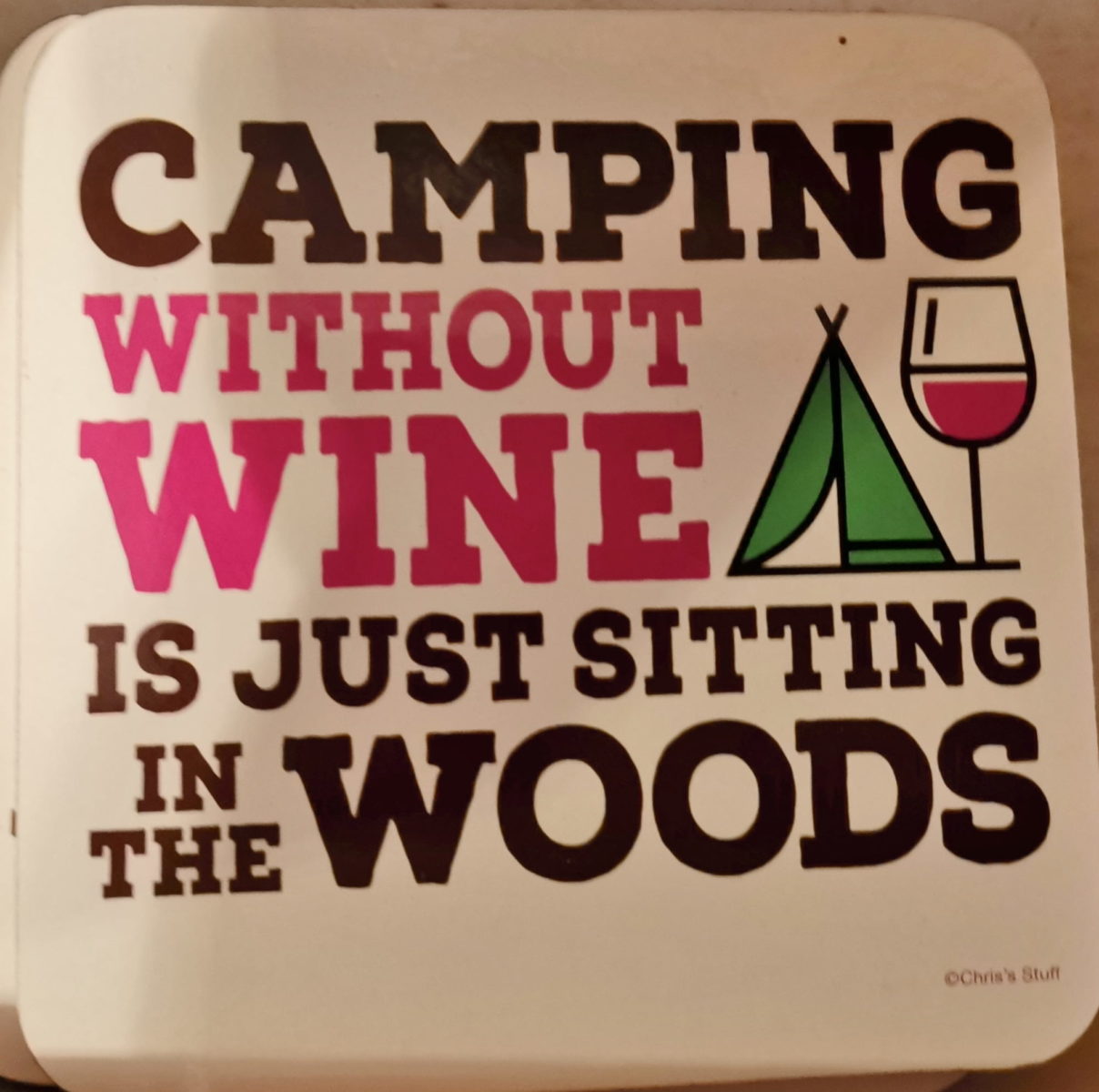
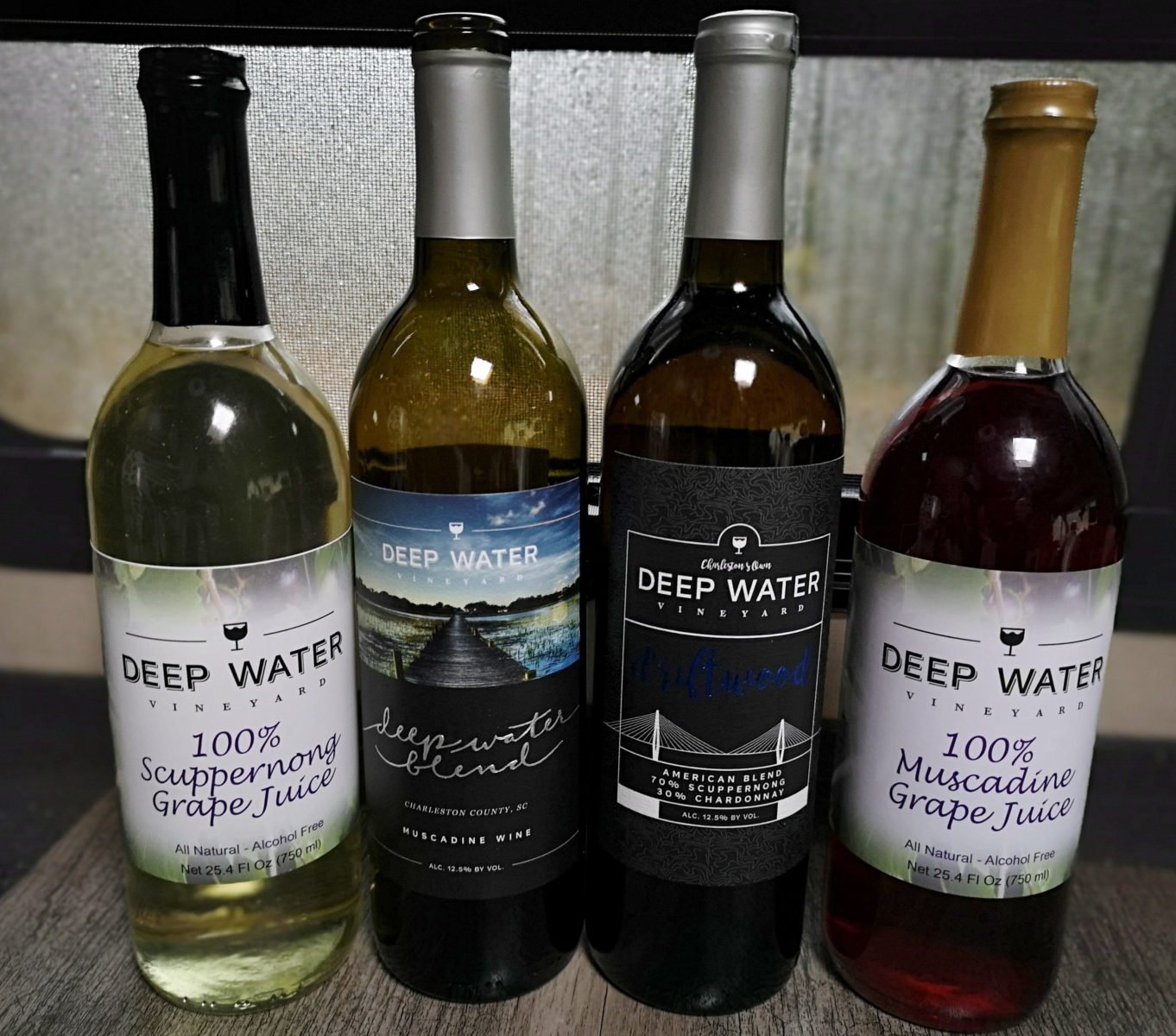
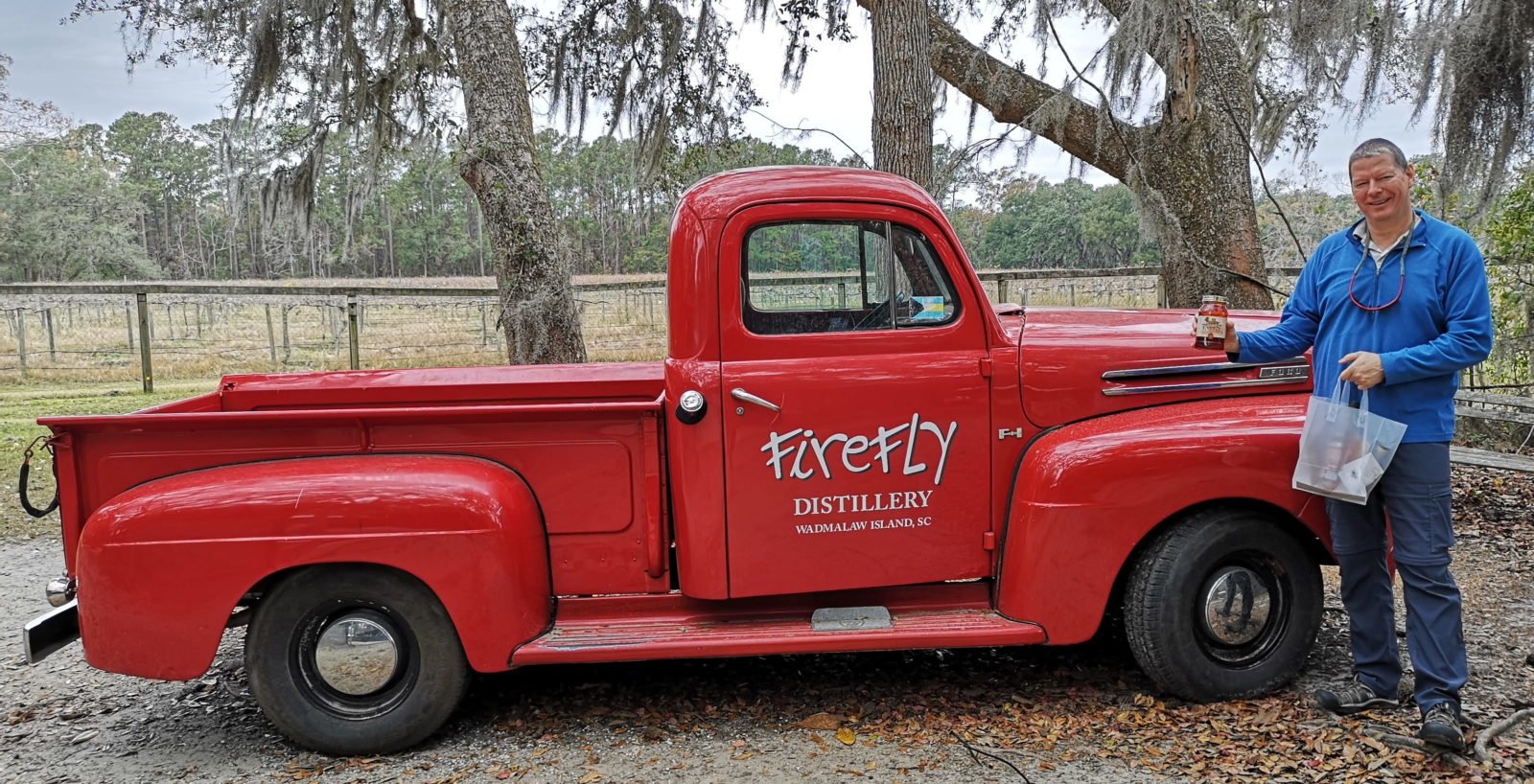
Finally, we arrived at Edisto Beach State Park, which has one campground in the maritime forest and another beside the beach, which is the one we had chosen. This beach certainly was not as long as Myrtle or Huntington, but it did have a lot of shells, which made for great walks.
We learned some civil rights history here: South Carolina state parks practiced racial segregation from their founding until 1966. In 1965, a judge ruled that the parks must integrate, so a group of 13 civil rights workers went to Edisto for Fourth of July celebrations, but they were arrested. Finally, in 1966, the park segregation was lifted.
One afternoon, the park rangers were doing a talk on alligators, so we did a 12 km hike from the beach campground to the education center at the far end of the maritime forest. We watched a video about alligator research and went through the exhibits in the education center. On the way back, we stopped to see the 4,000-year-old shell midden, which unfortunately is eroding into the coastal waterway.
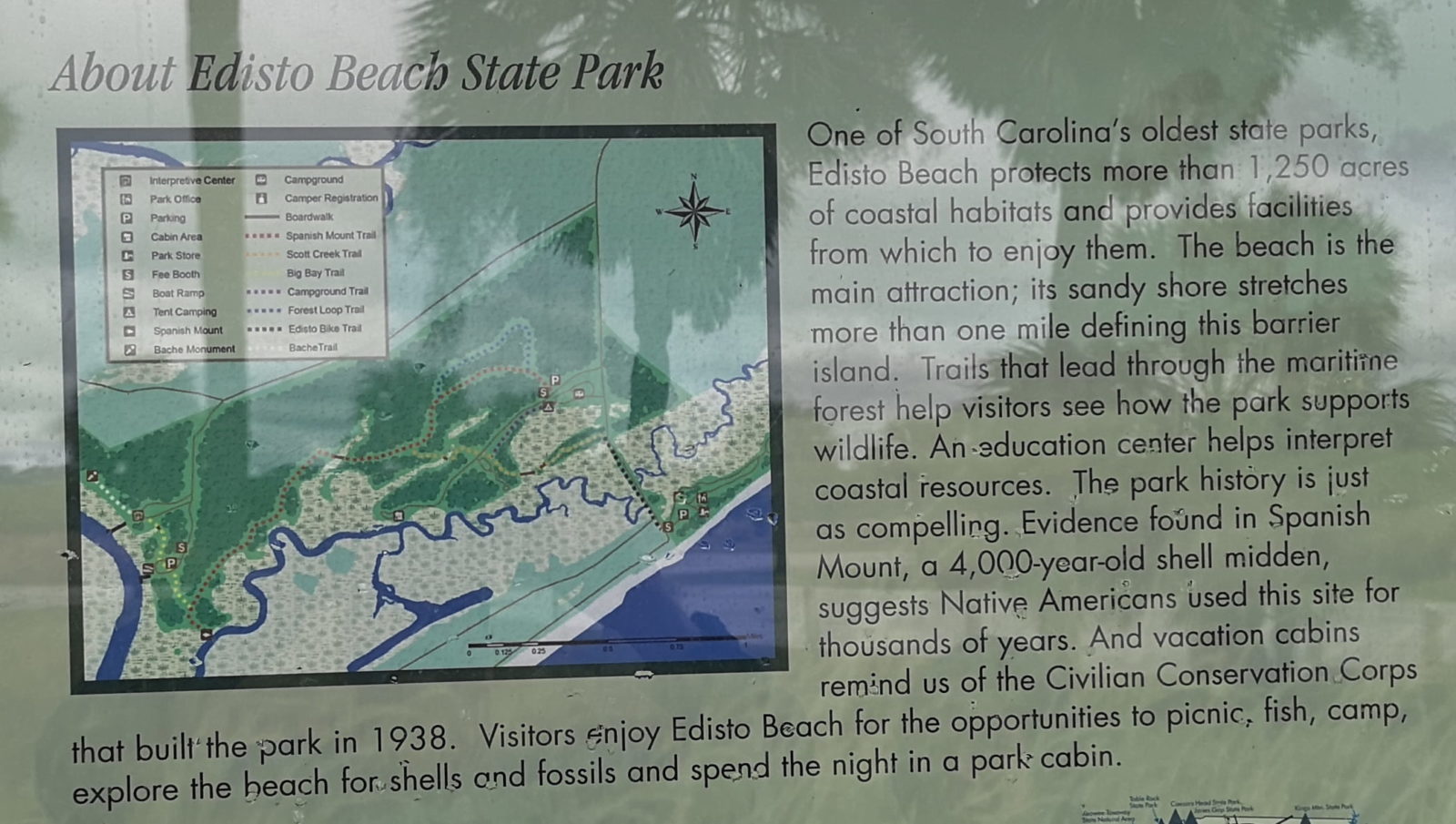
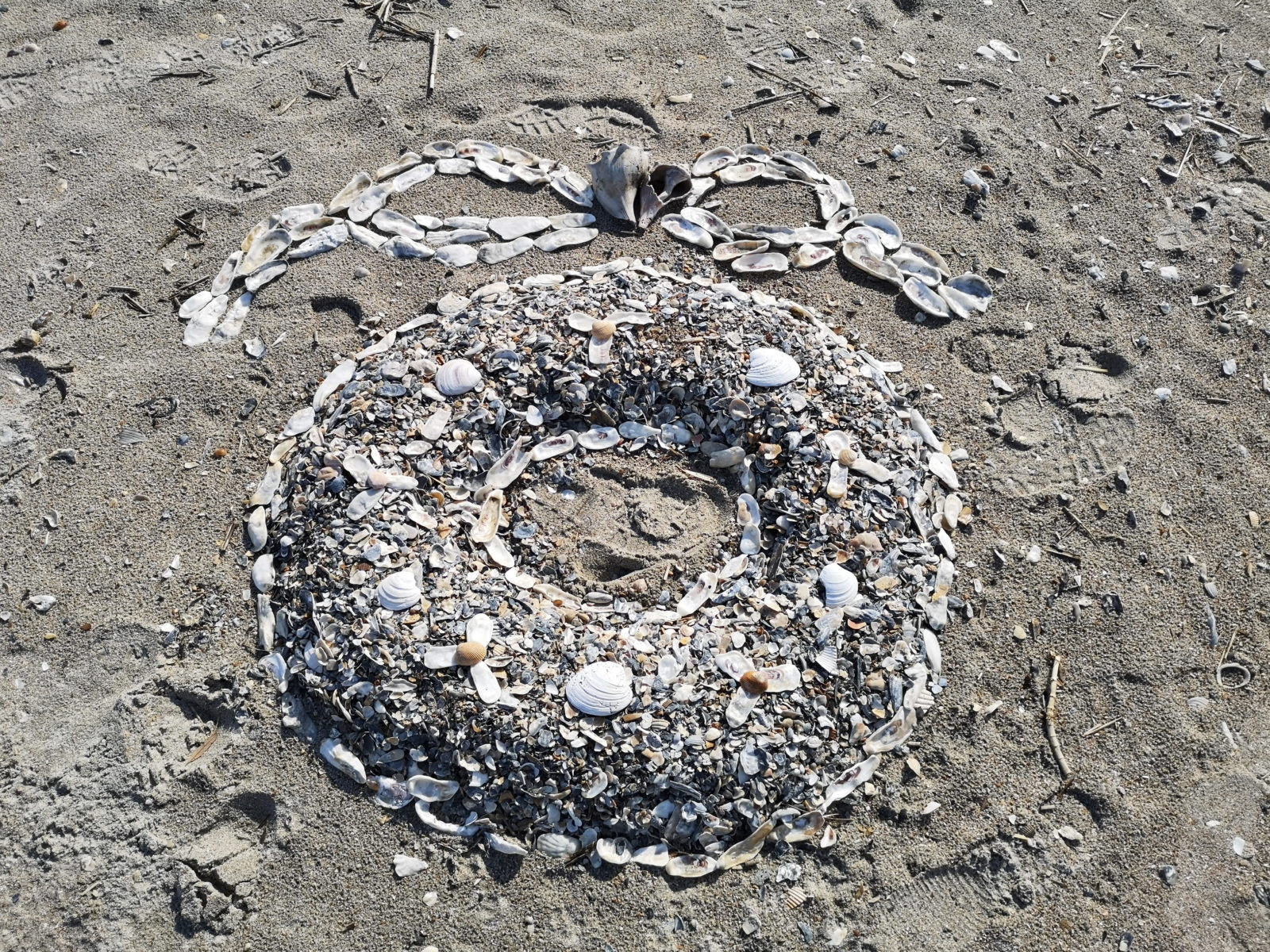

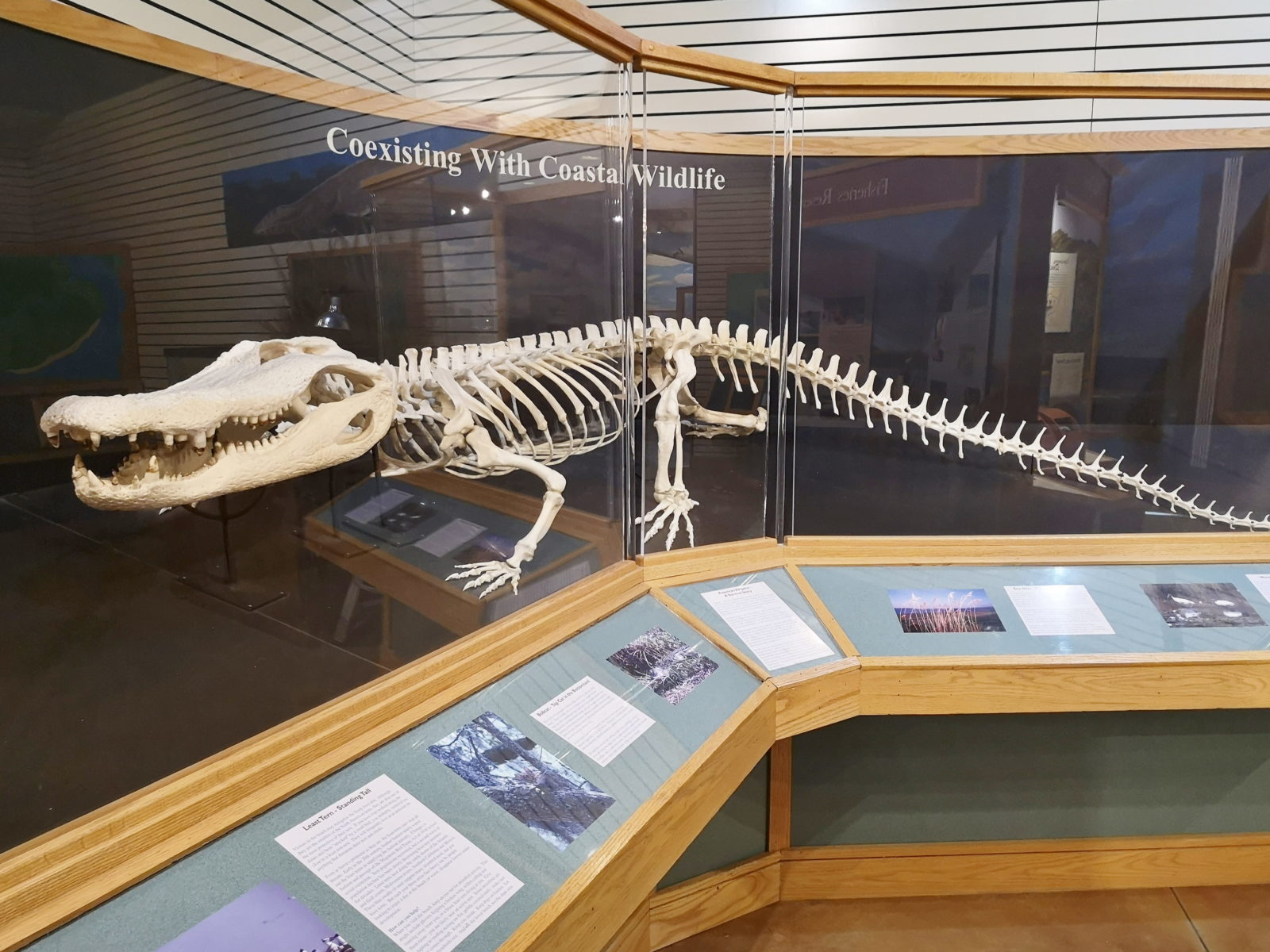
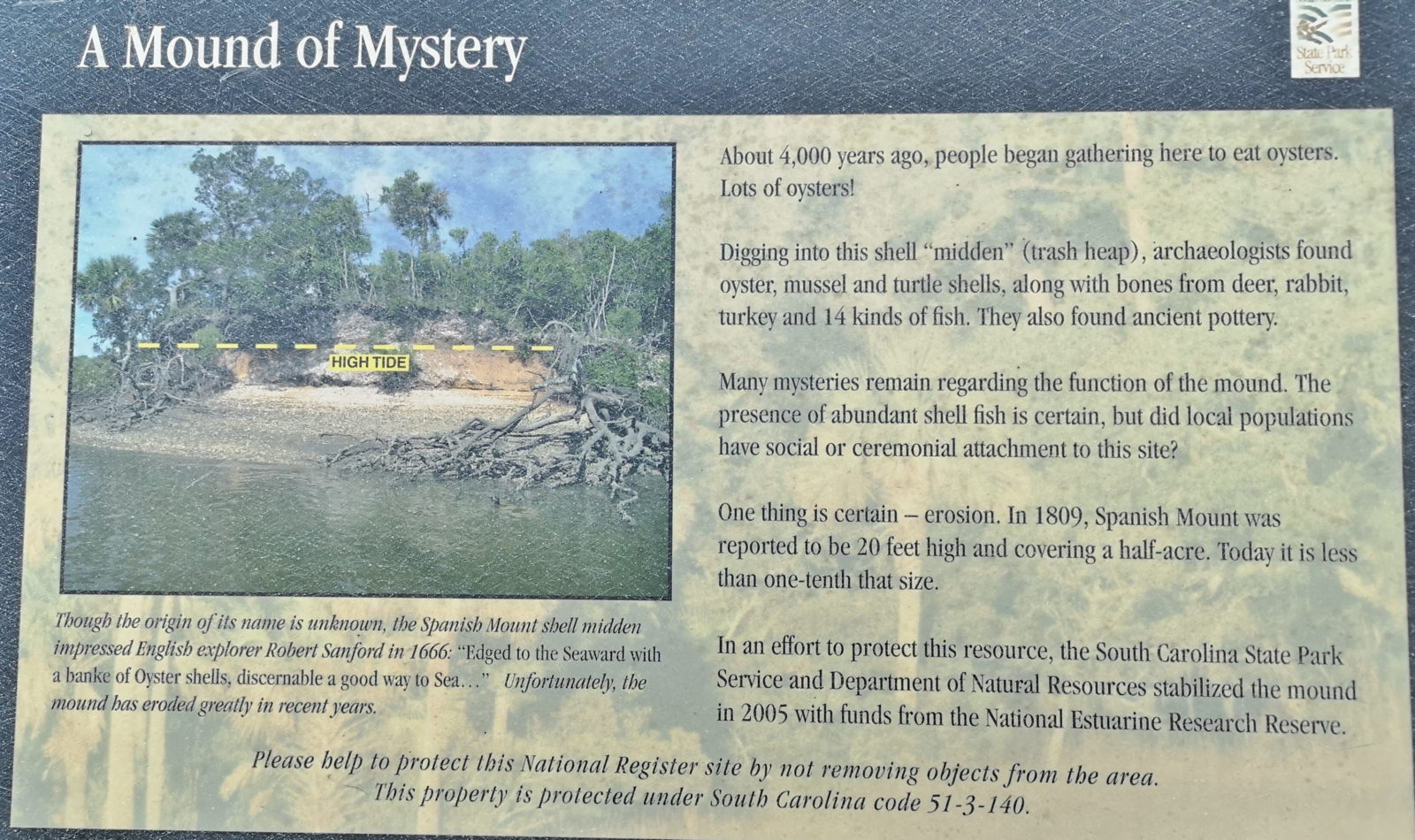
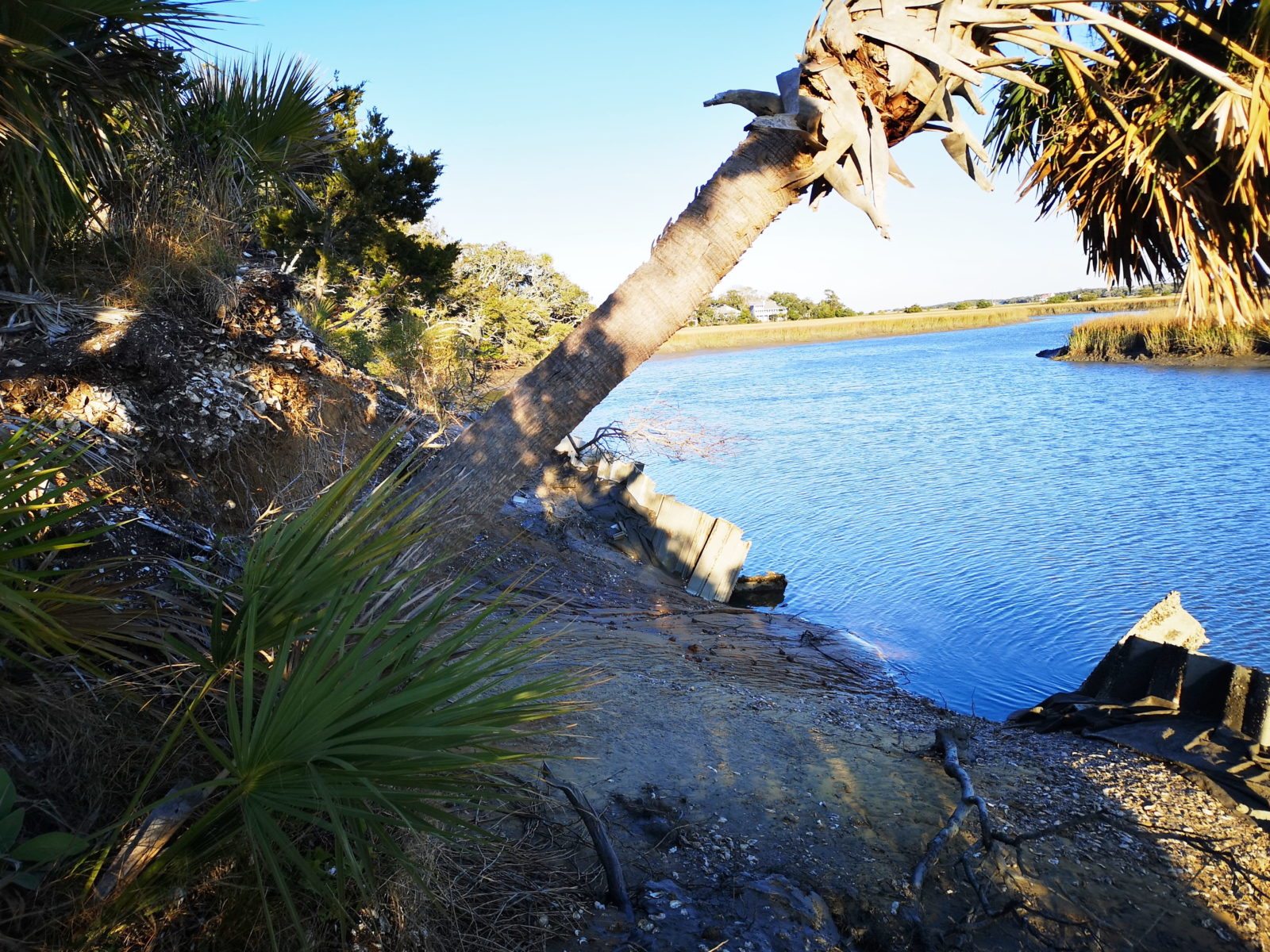
Our last stop along the South Carolina coast was Hunting Island State Park, where we stayed for three nights. This park is technically only 20 kms away from Edisto, but we had to drive 135 kms out and back to get there, due to the waterways. This park was massively impacted by Hurricane Mathew in 2016, and actually lost 40 feet of beach and 14 cabins – only one cabin remains, by the lighthouse.
Despite the damage, this park was one of our favorites, as it has a very long beach with shells and fossilized shark teeth, some great mountain bike trails through the palmetto forest and along the salt water lagoon, a boardwalk out into the salt marsh, an interpretative center with local snakes and turtles, a lighthouse (moved to its current location in 1889 and 132.5 feet high) which is open to the public, and ranger-/volunteer-led programs. Over our three-night/four-day stay, we did 11 kms of walking and about 29 kms of biking. This was definitely a park we would like to return to in the future. When we left Hunting Island, we had a great seafood lunch at the Johnson Creek Tavern.
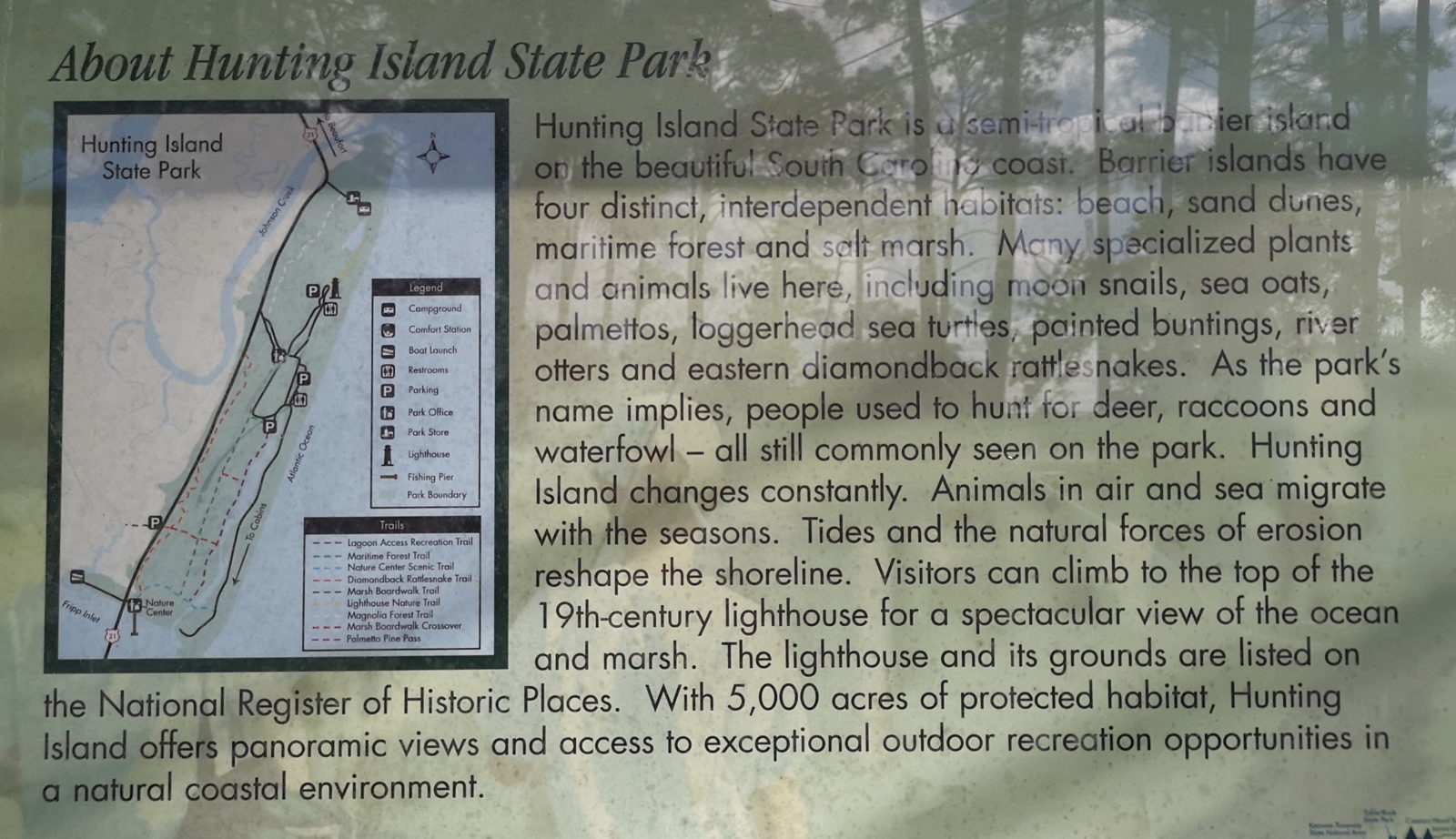
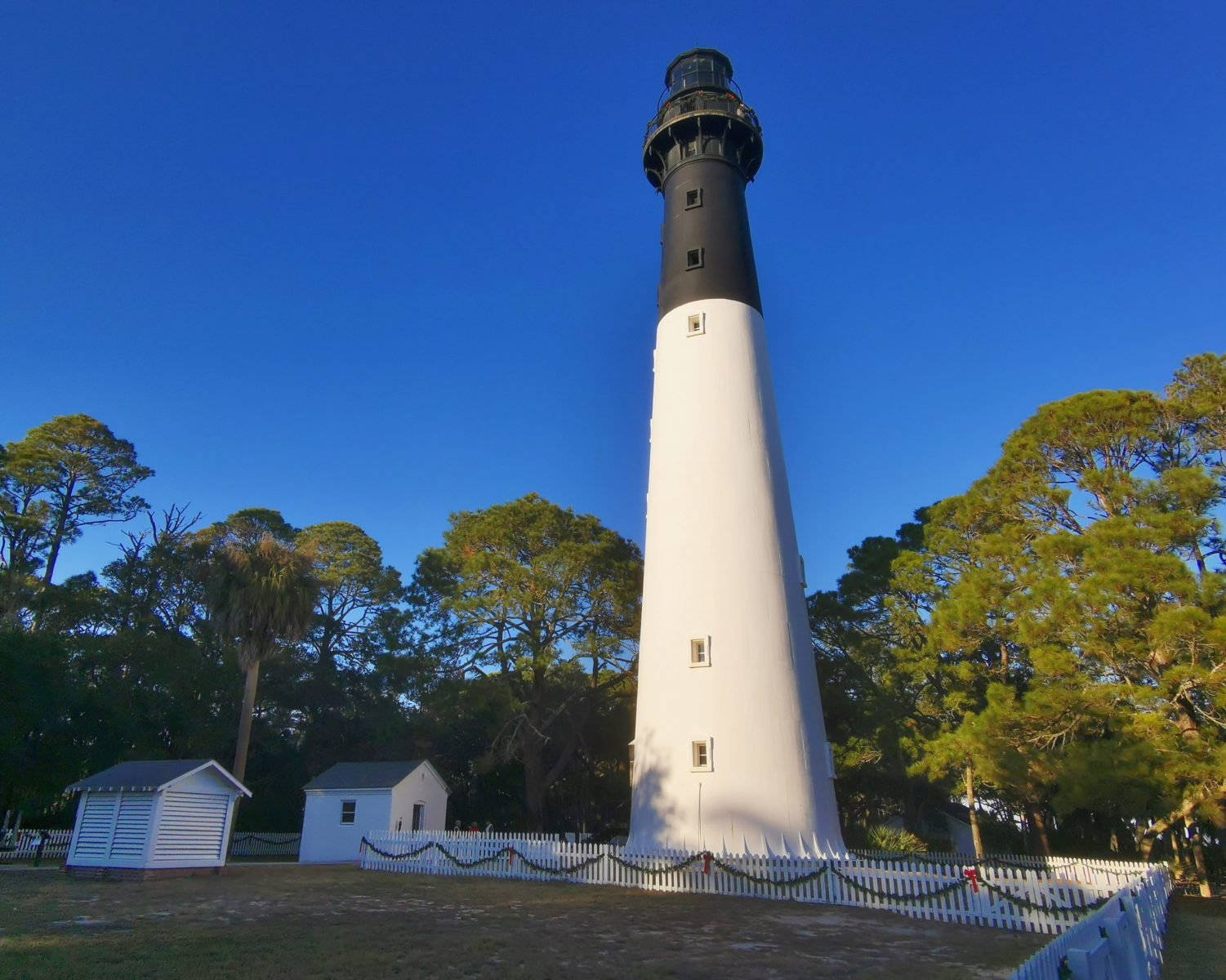
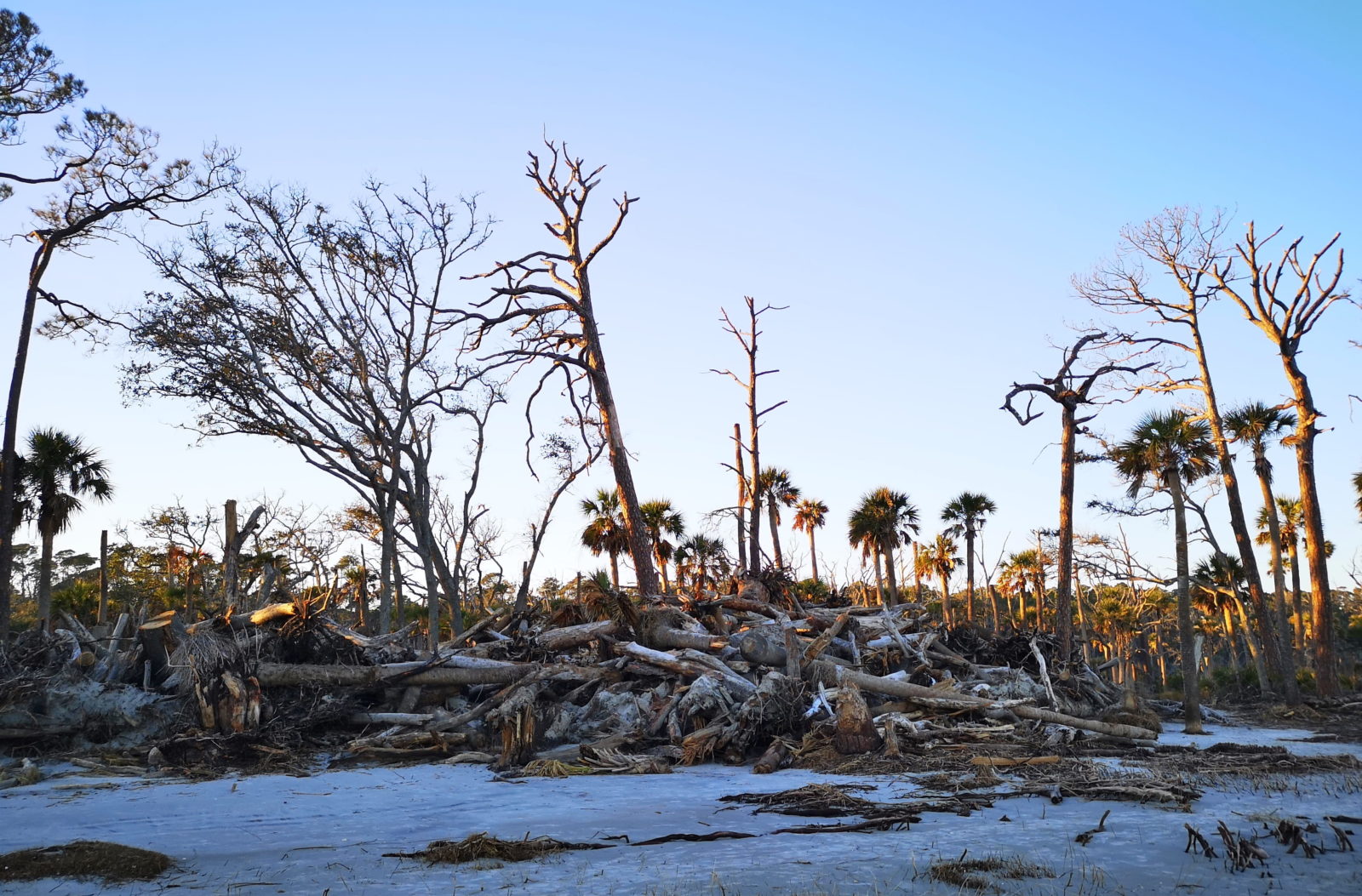
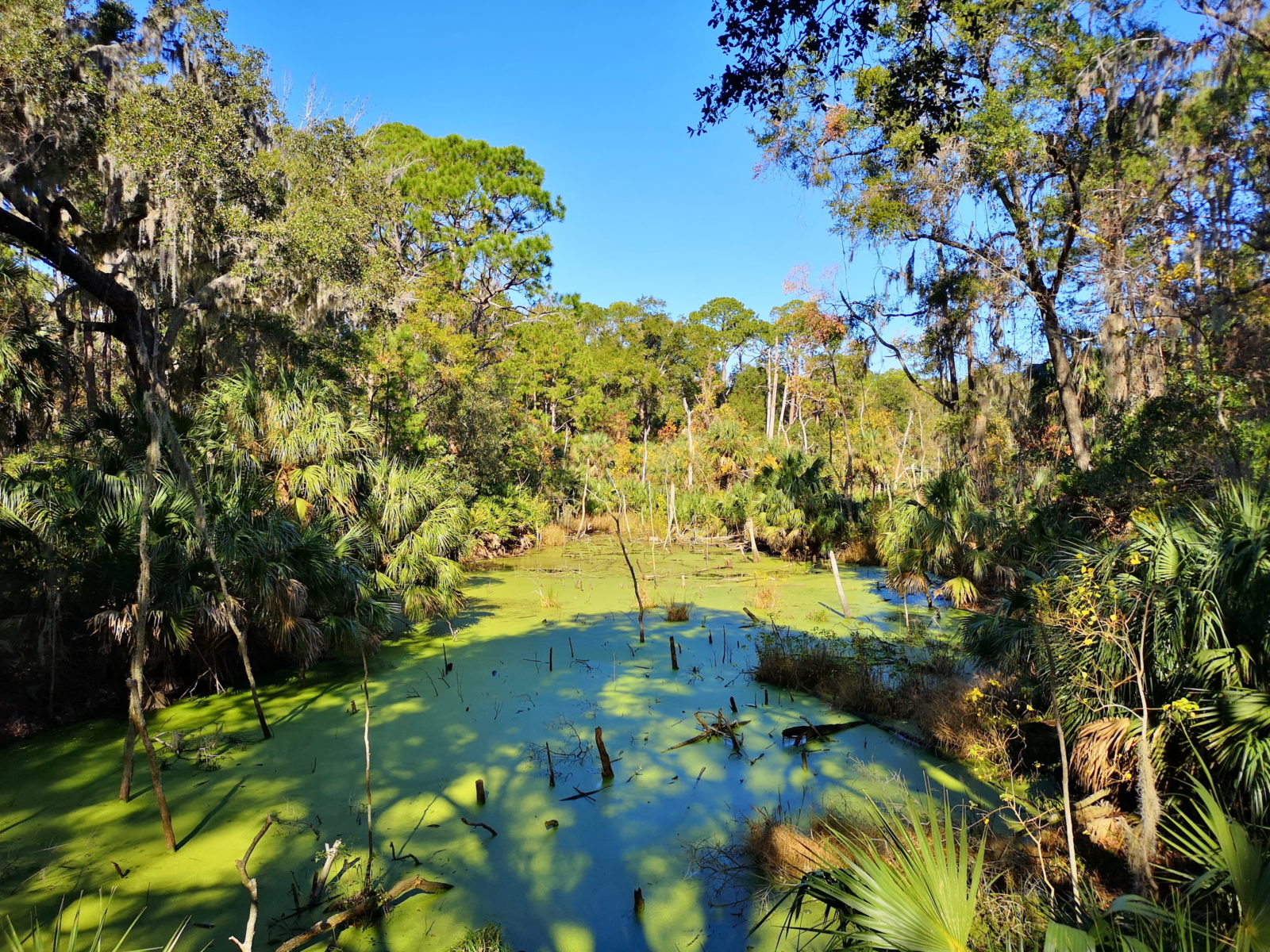
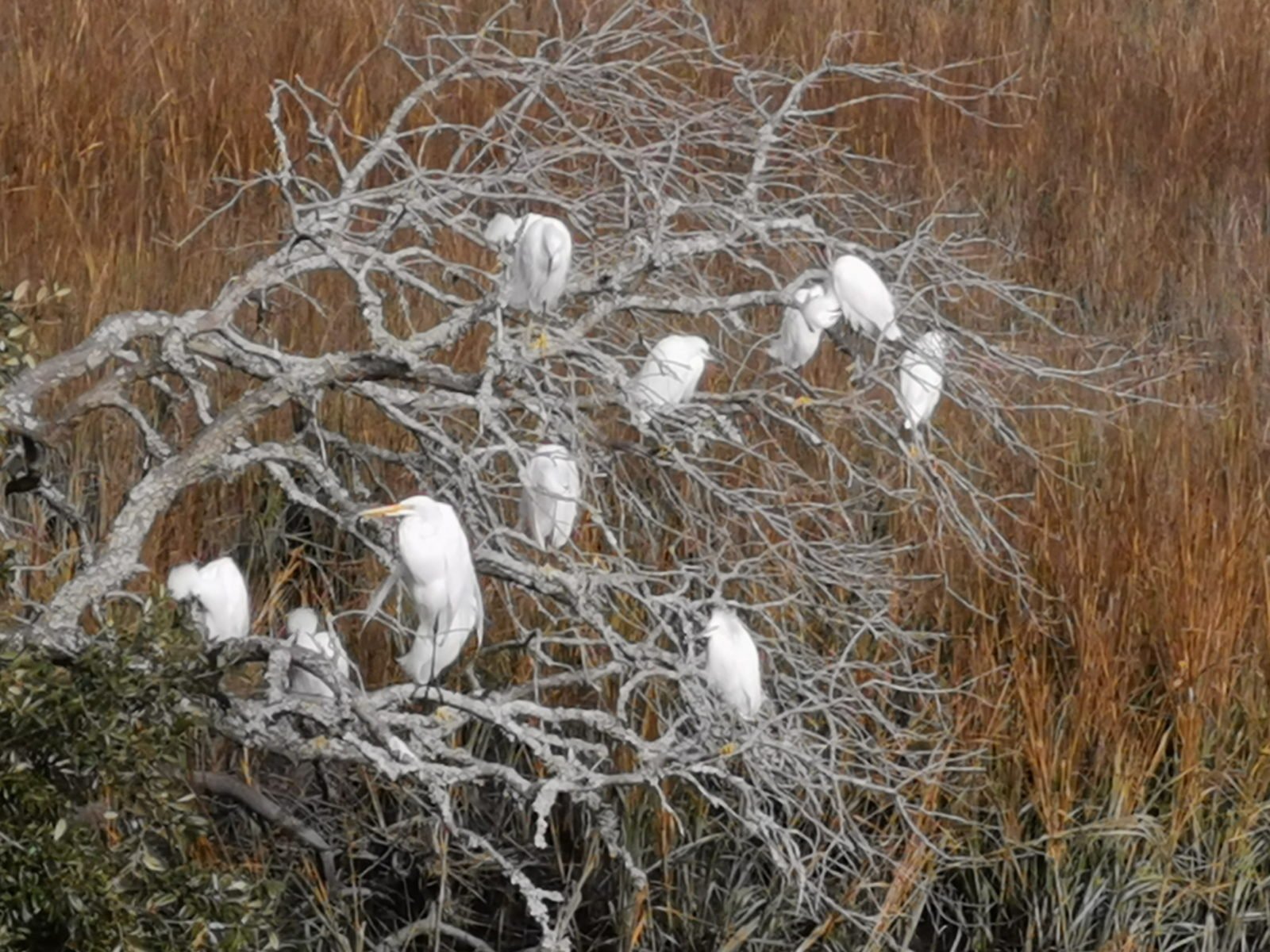
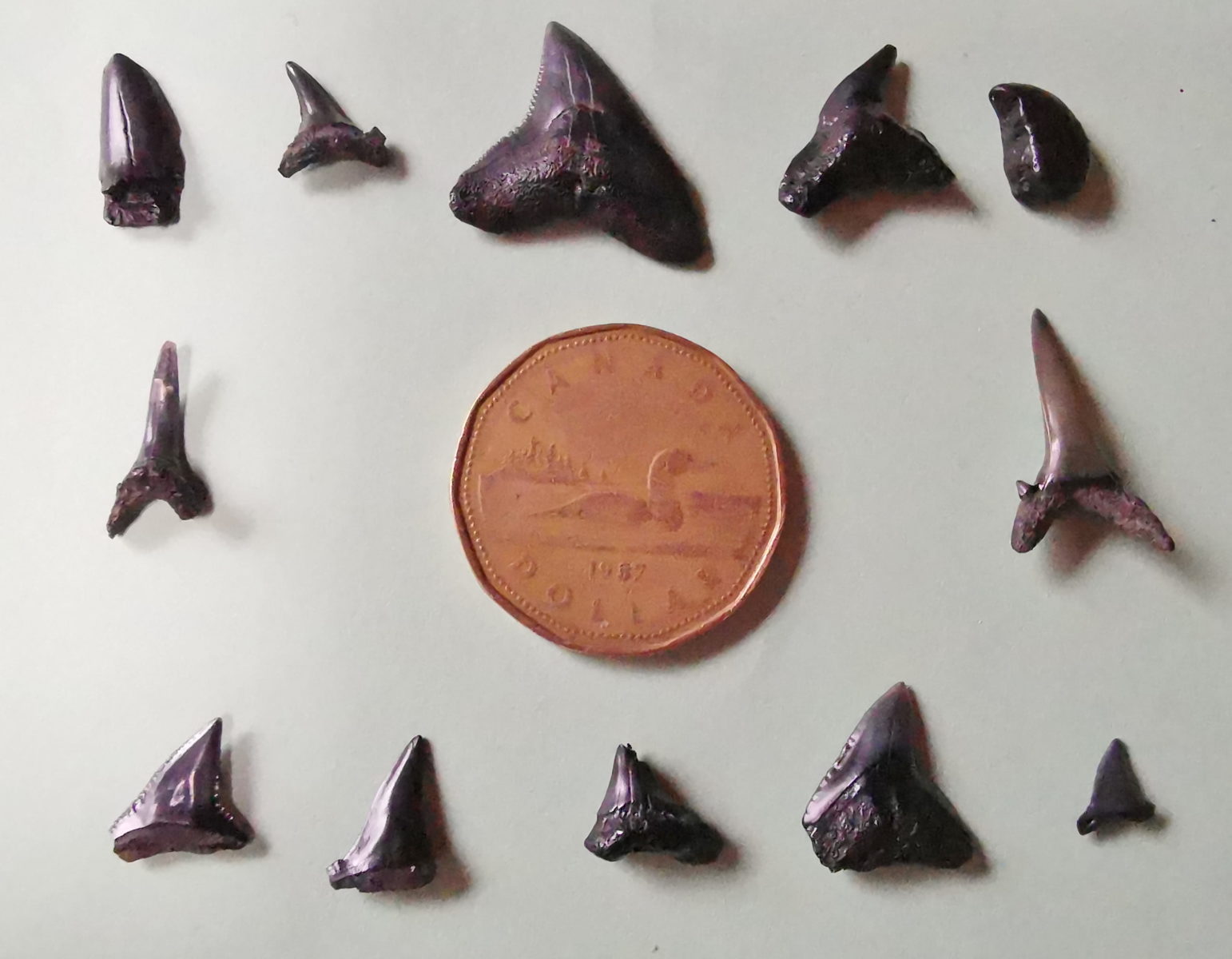
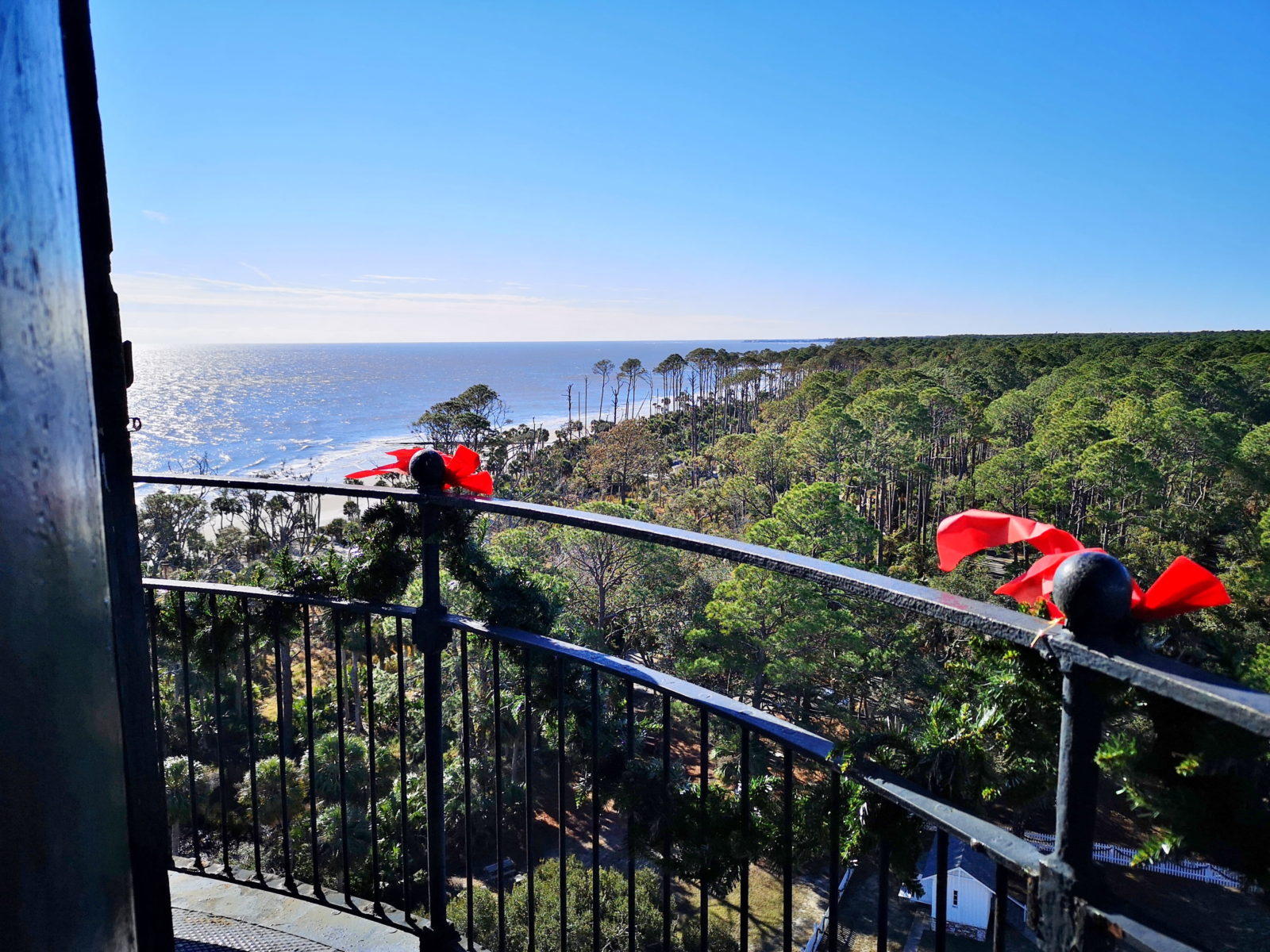
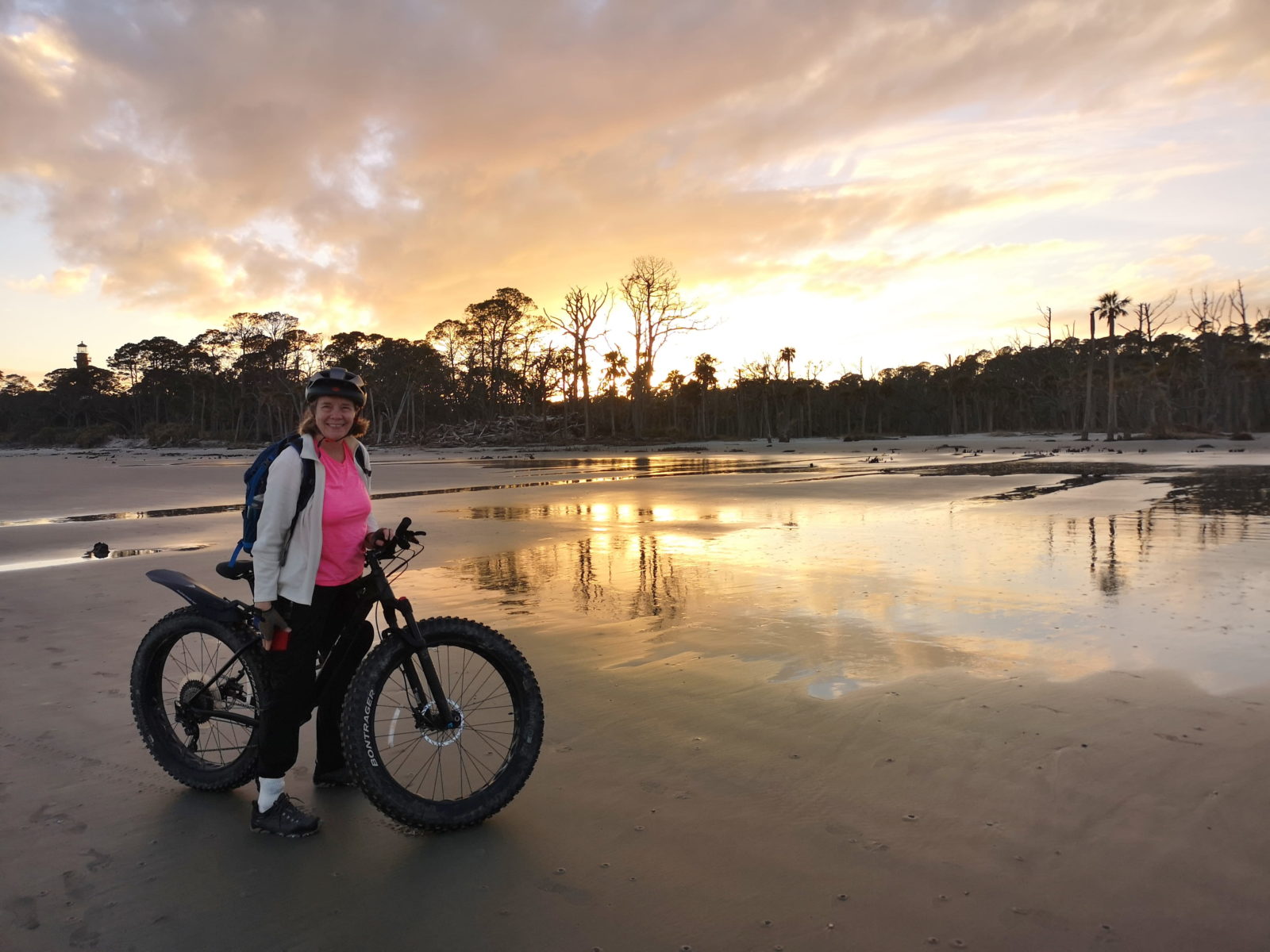
We hope you have enjoyed this trip along the South Carolina coast! It is definitely a place to add to your travel list.


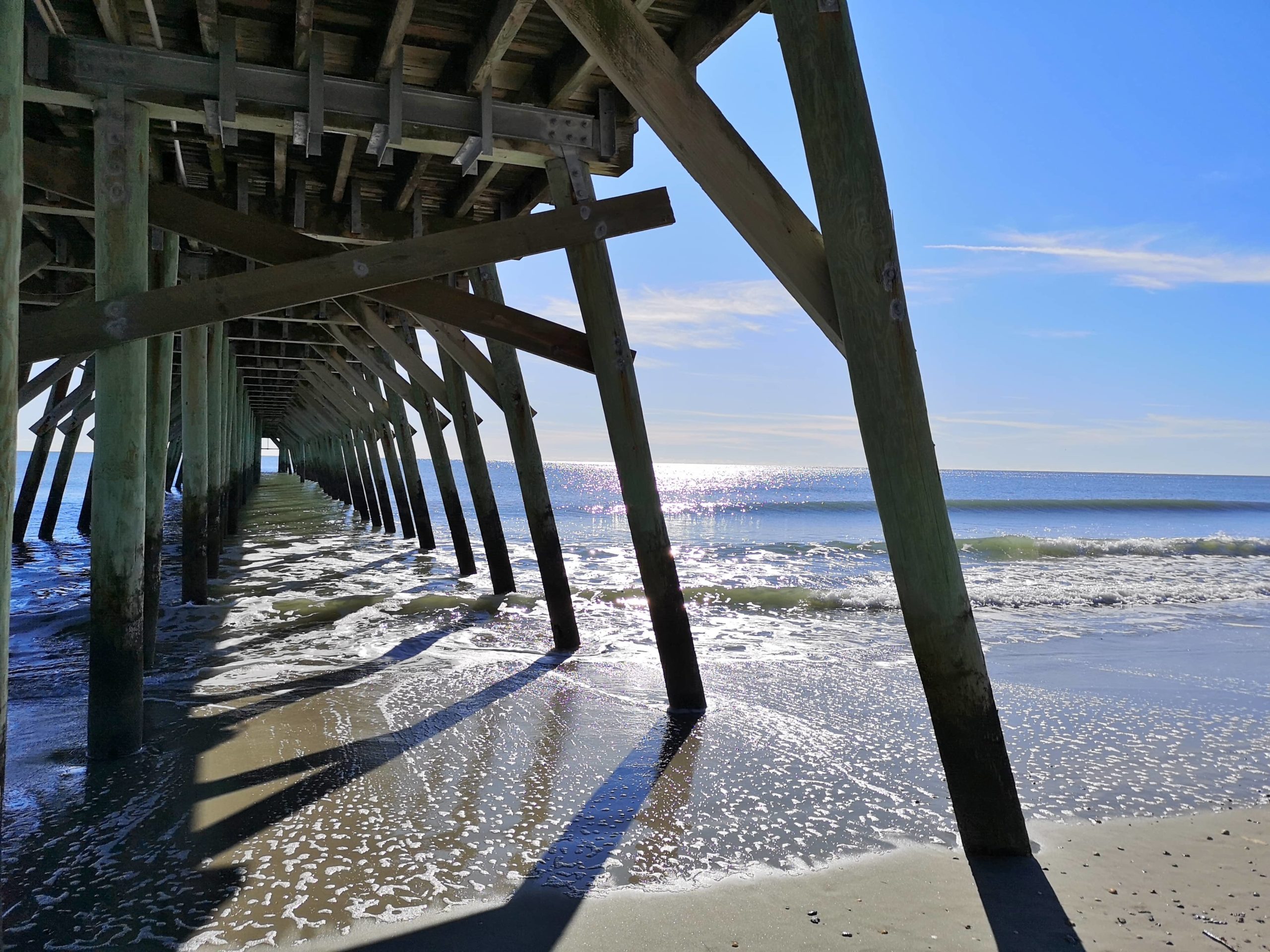



Comments